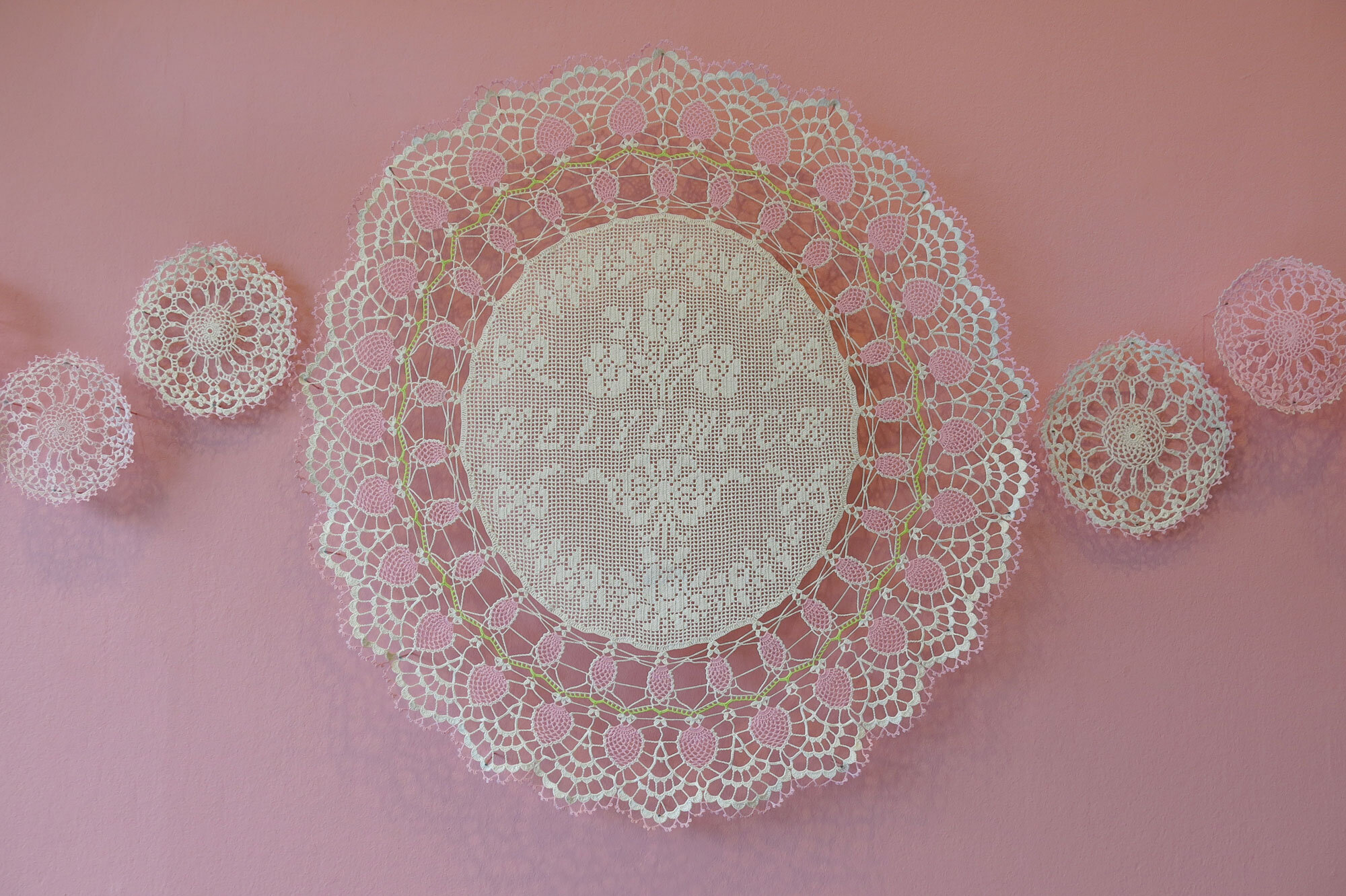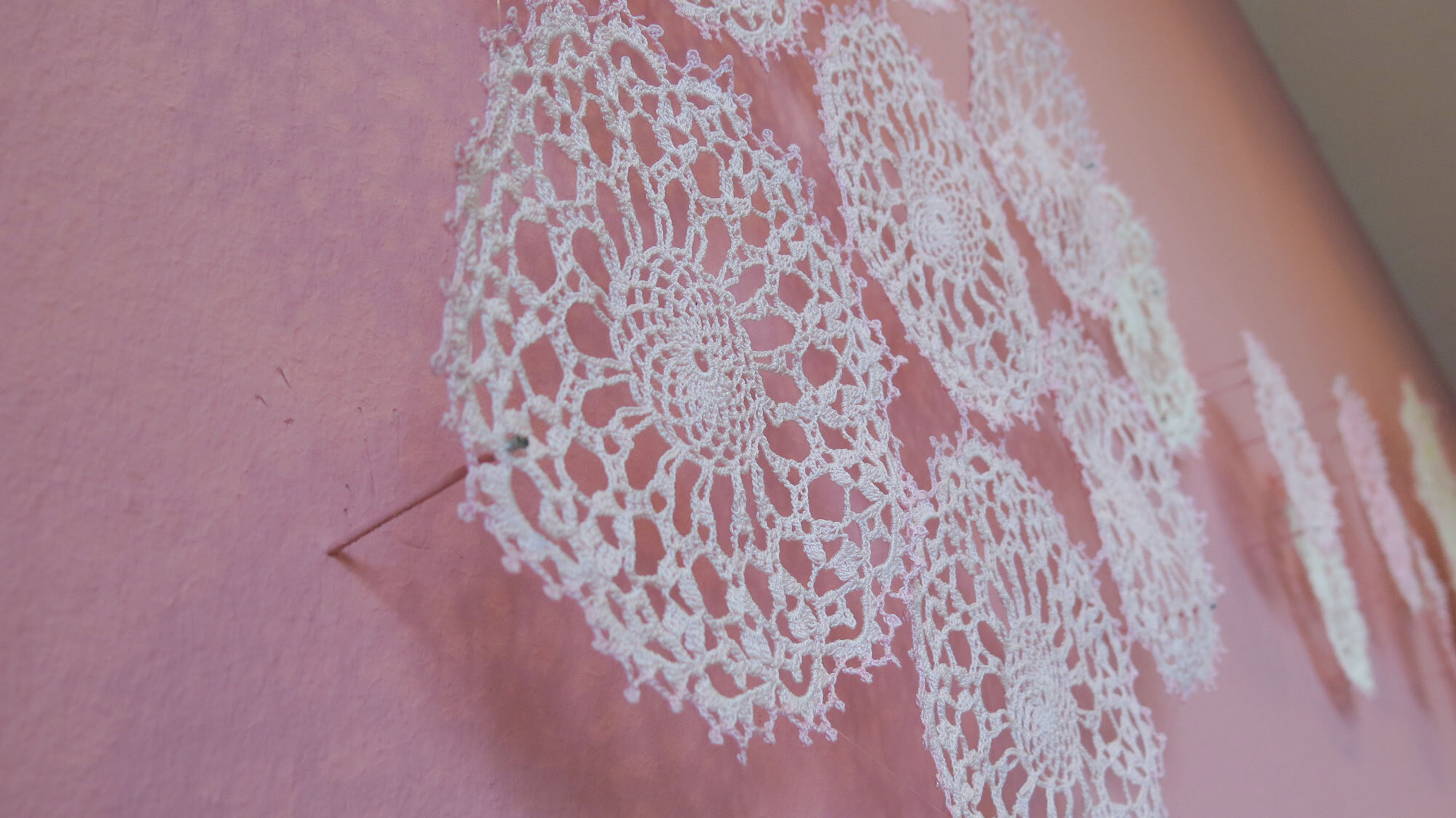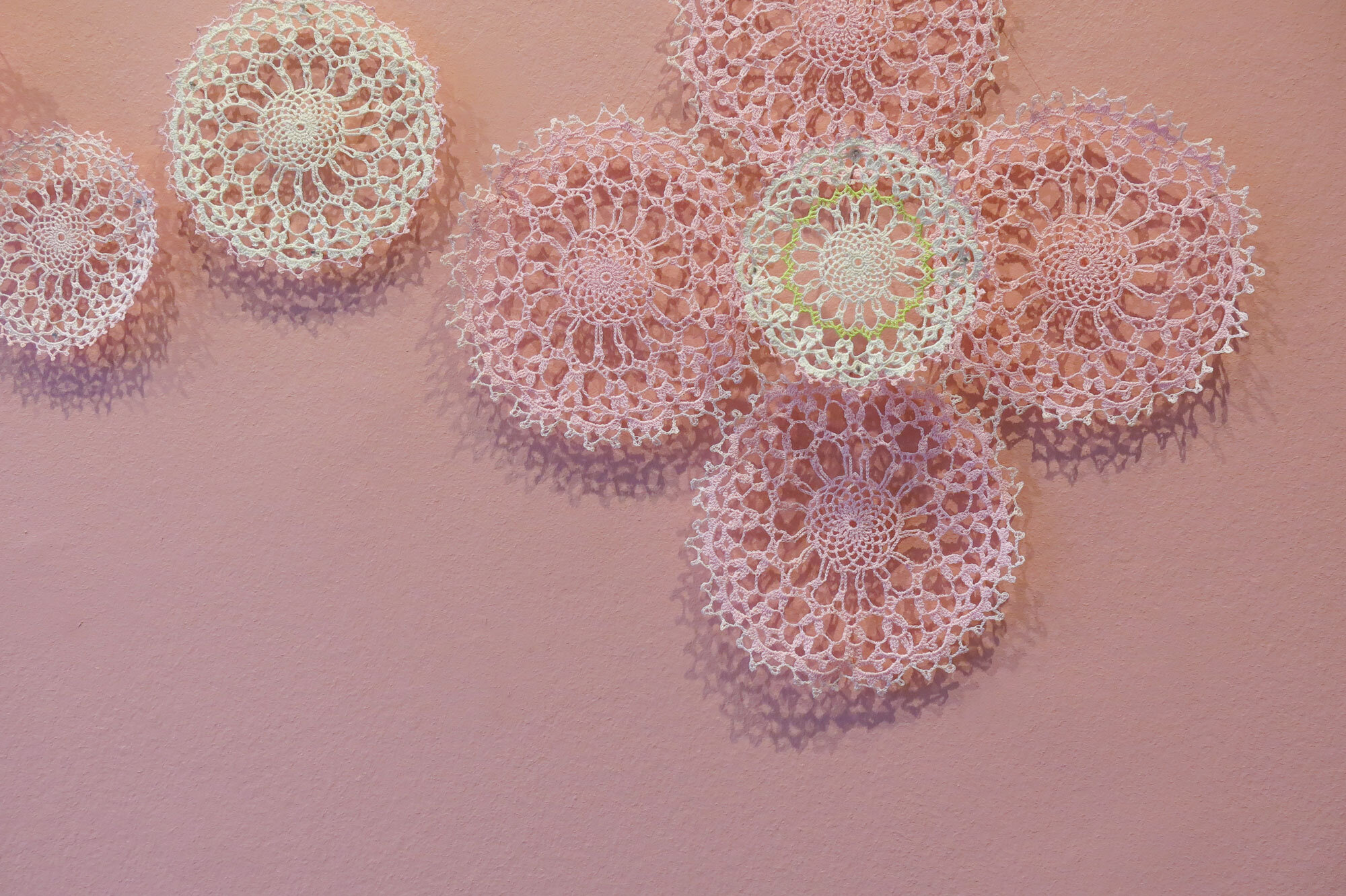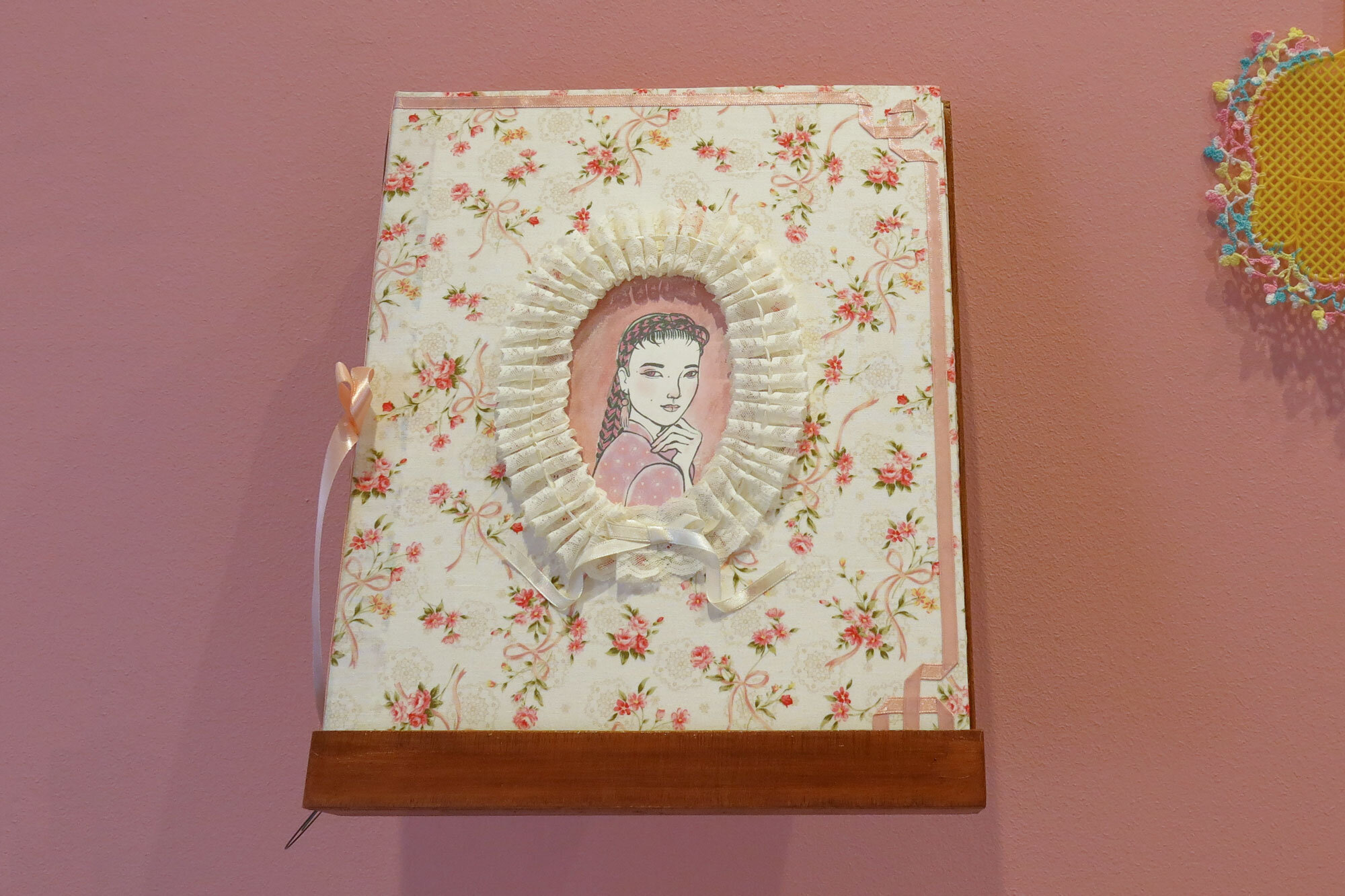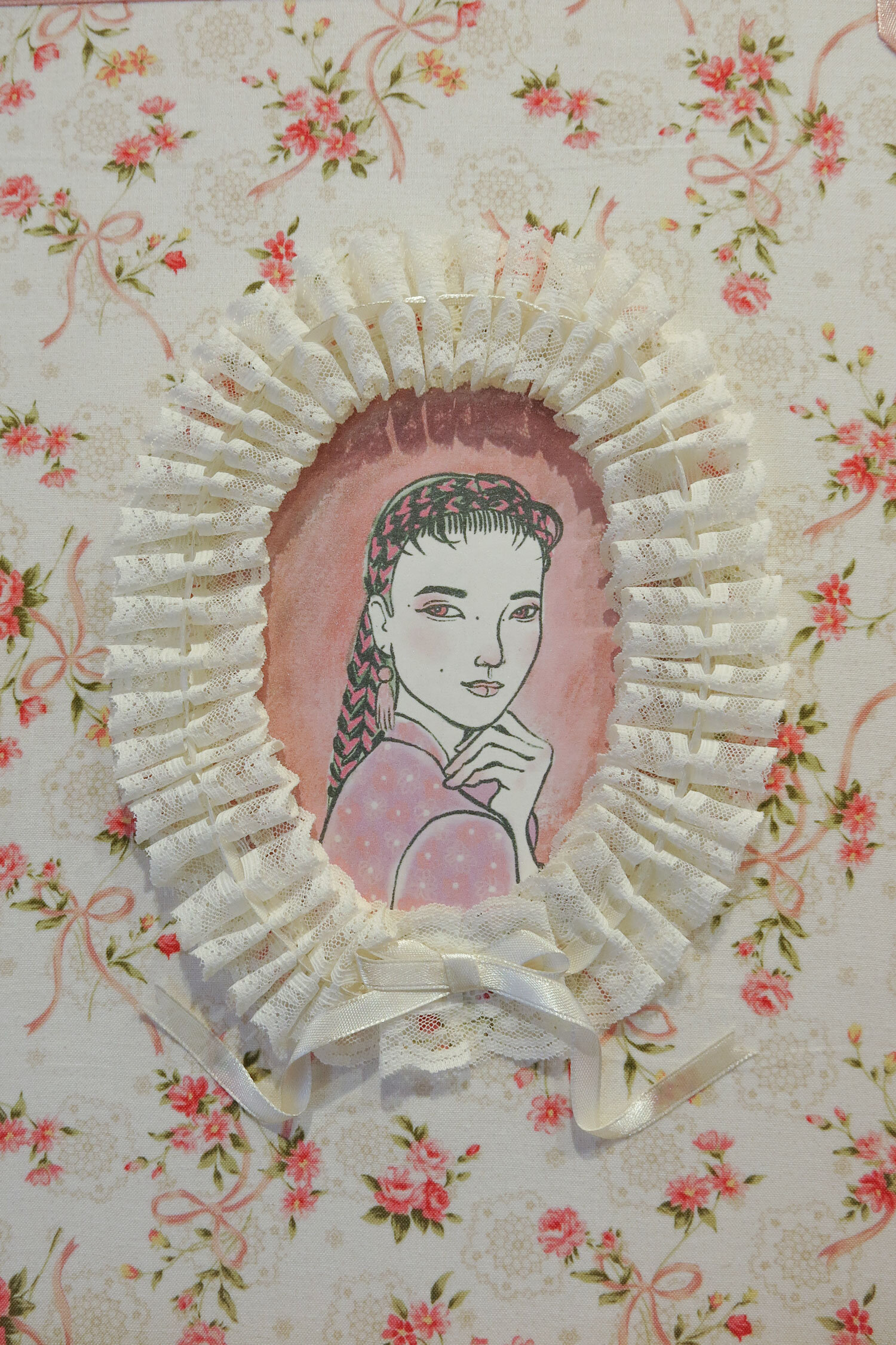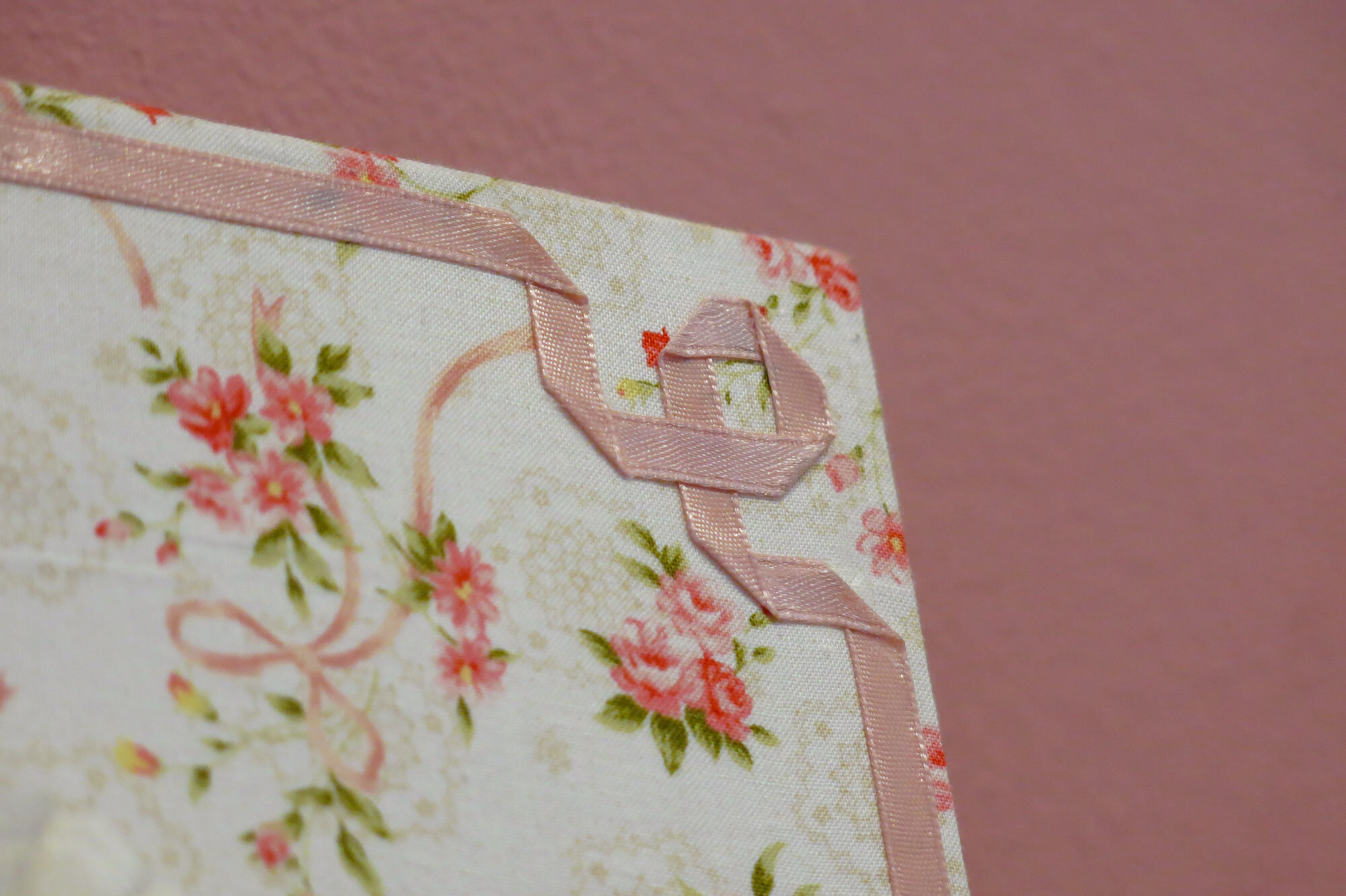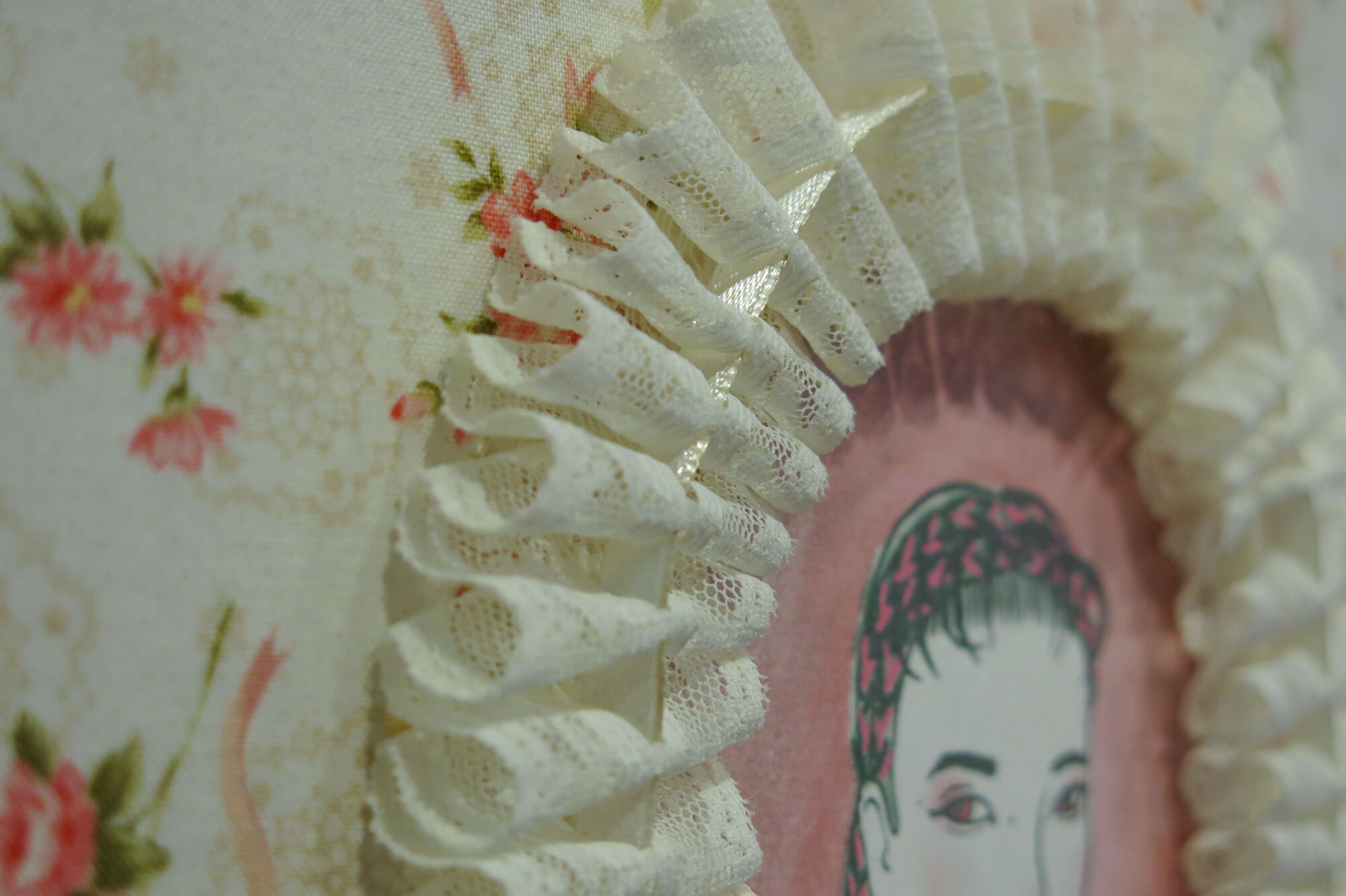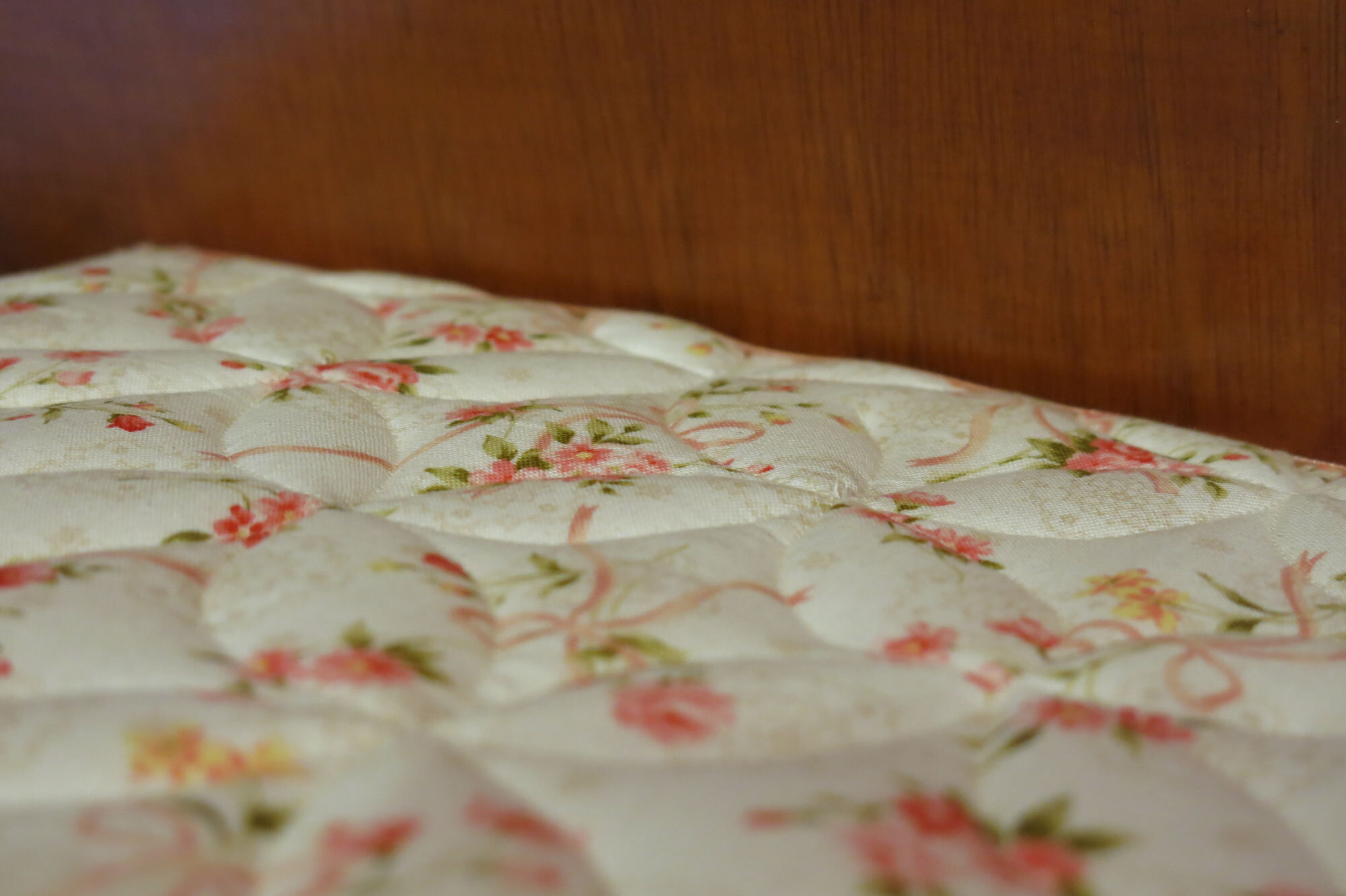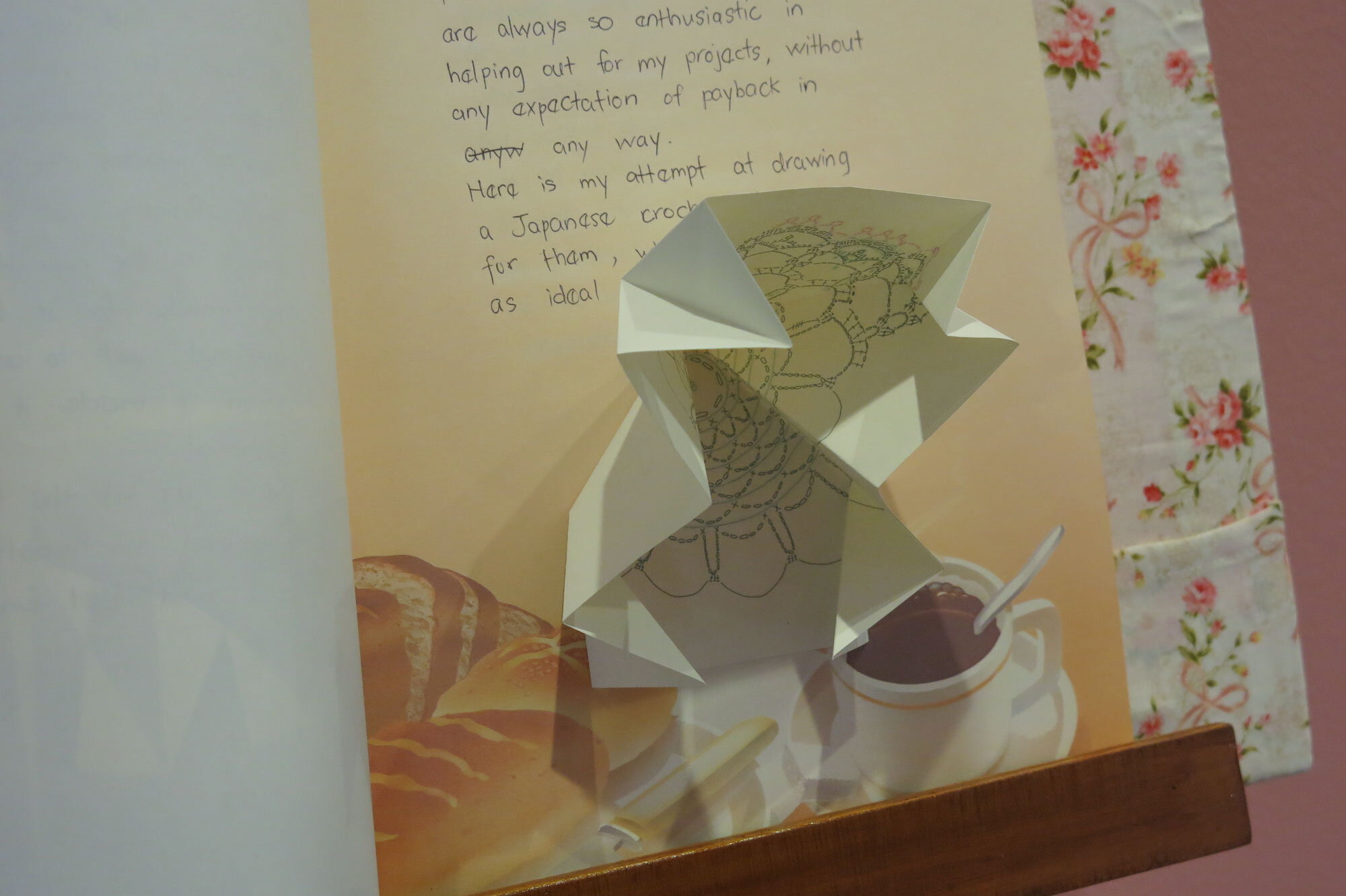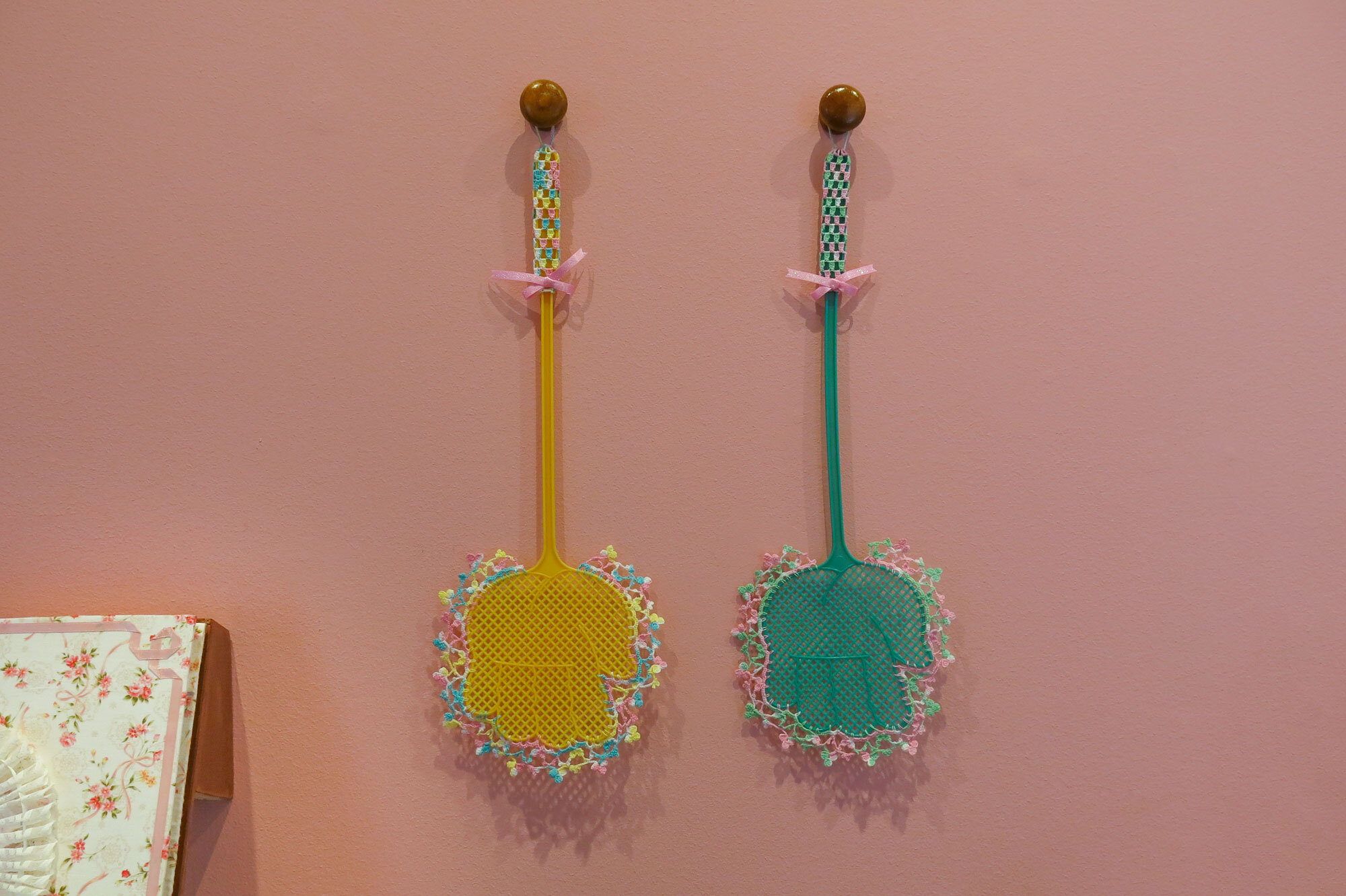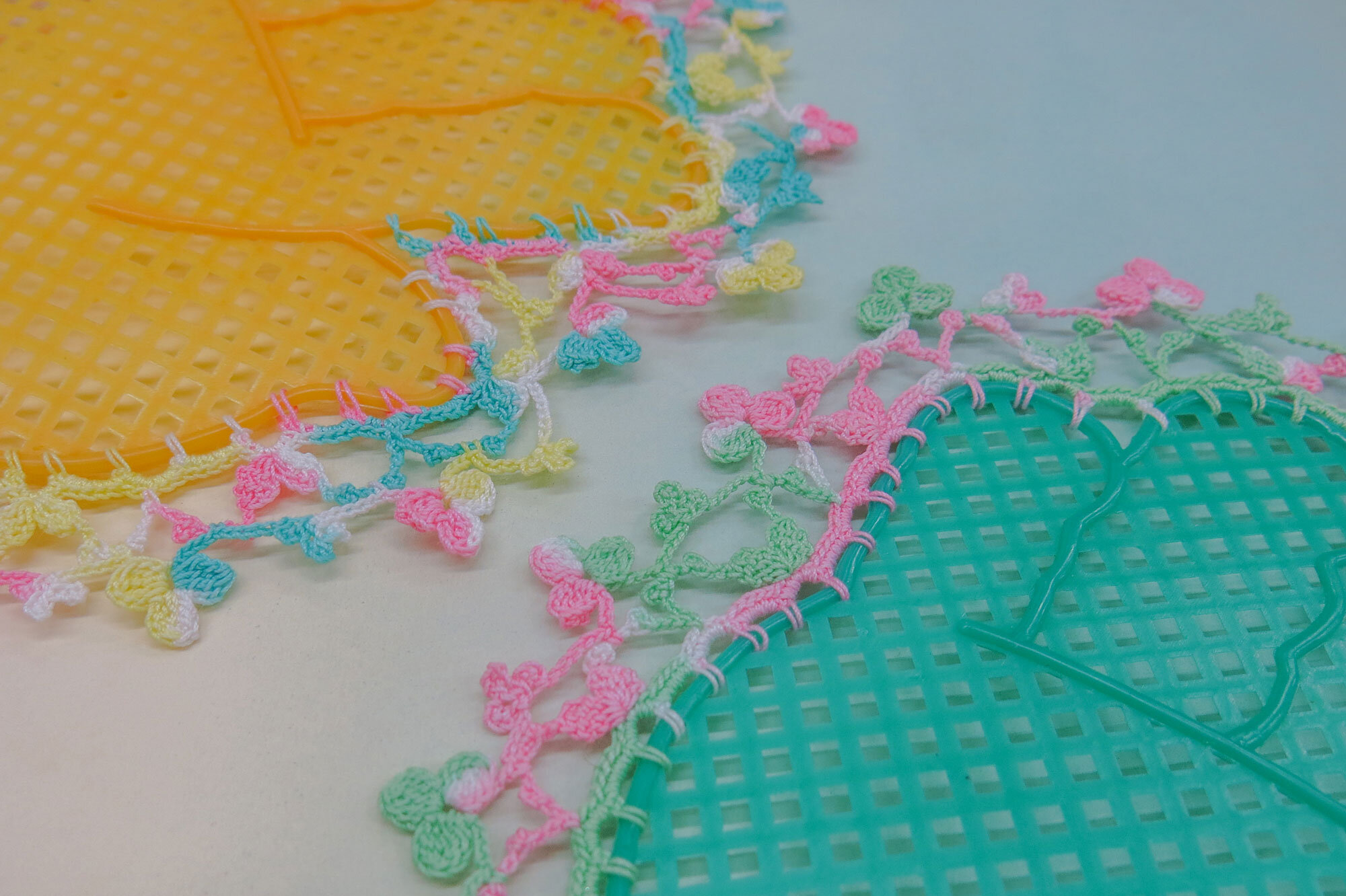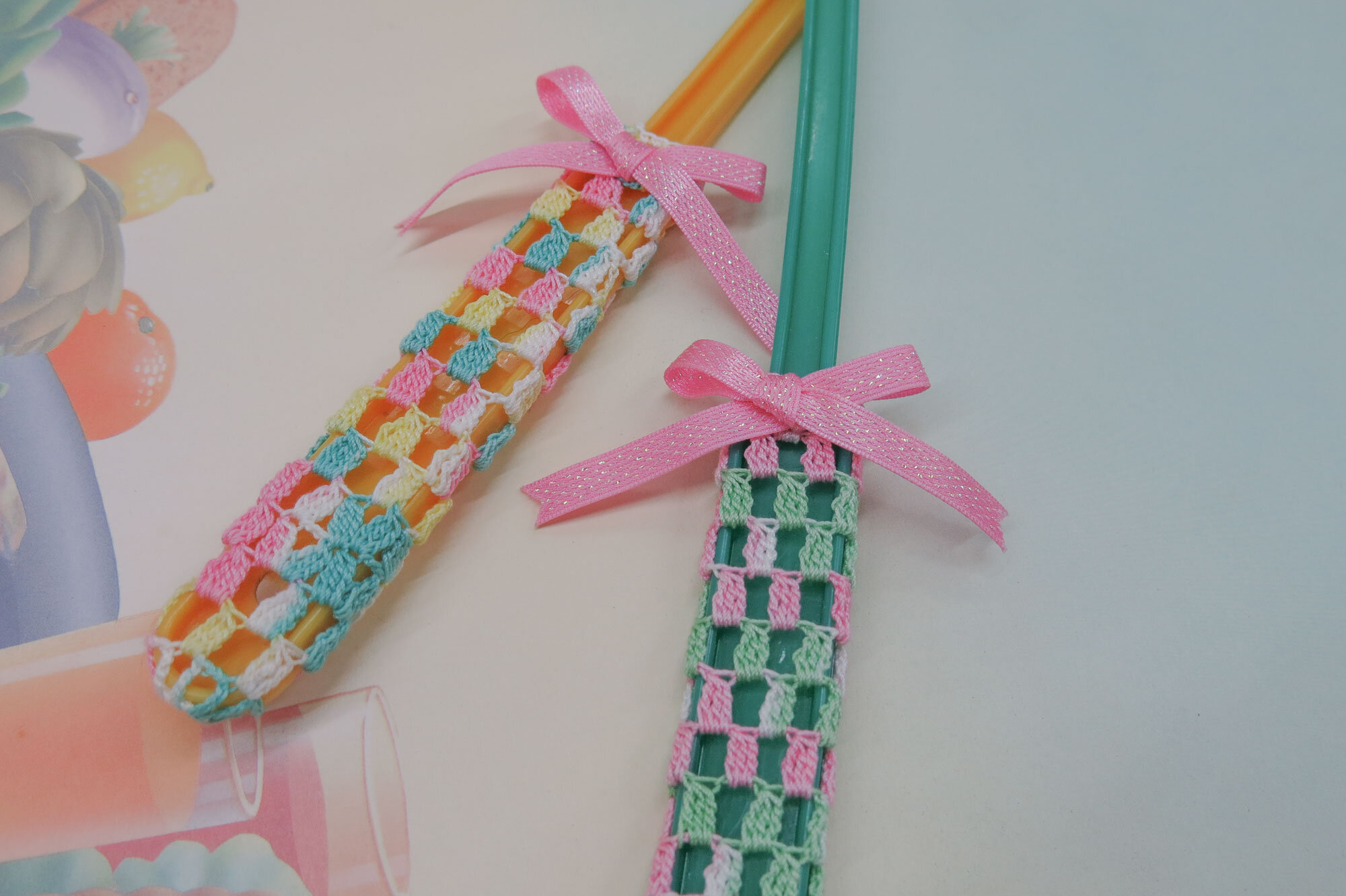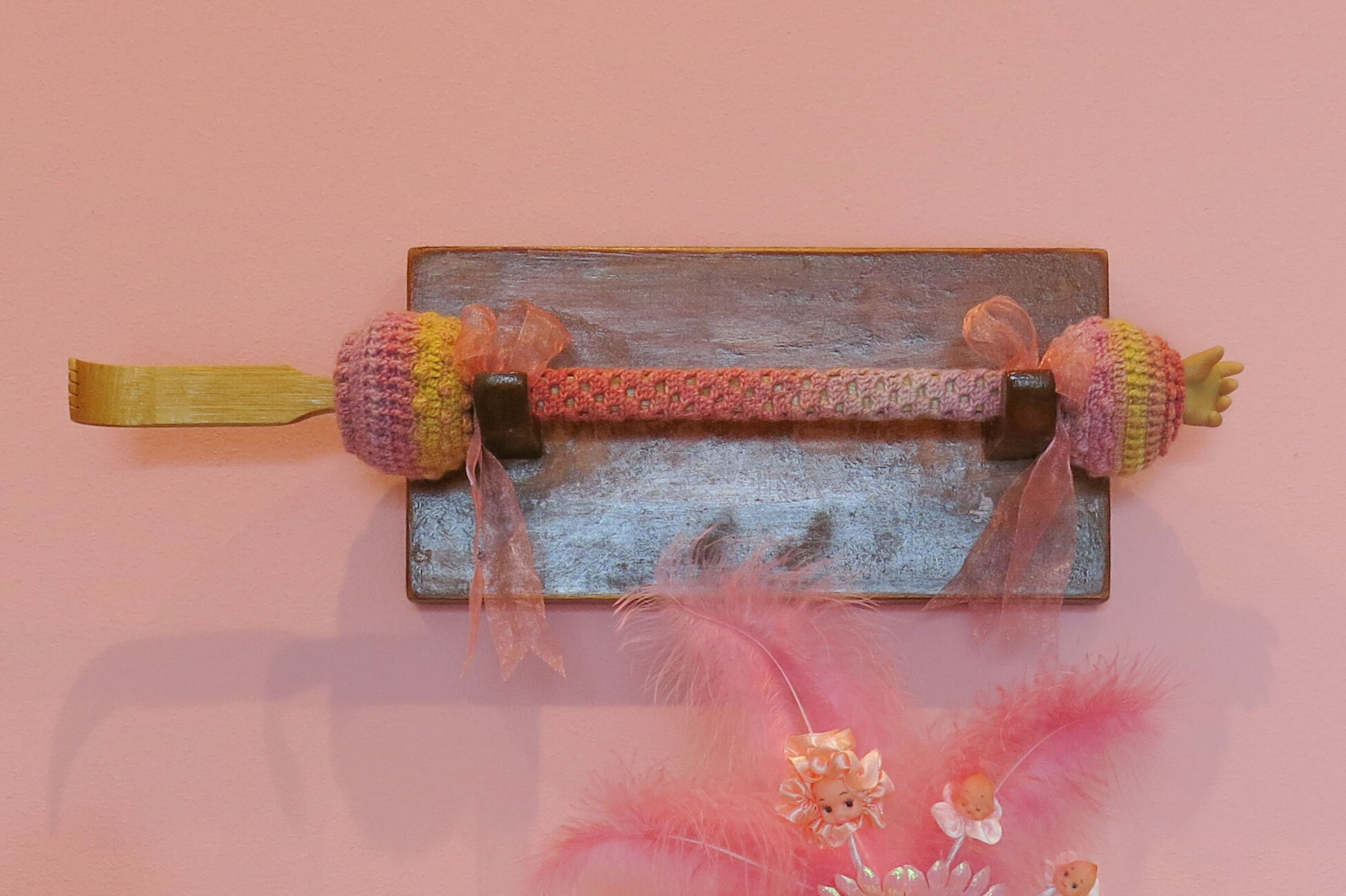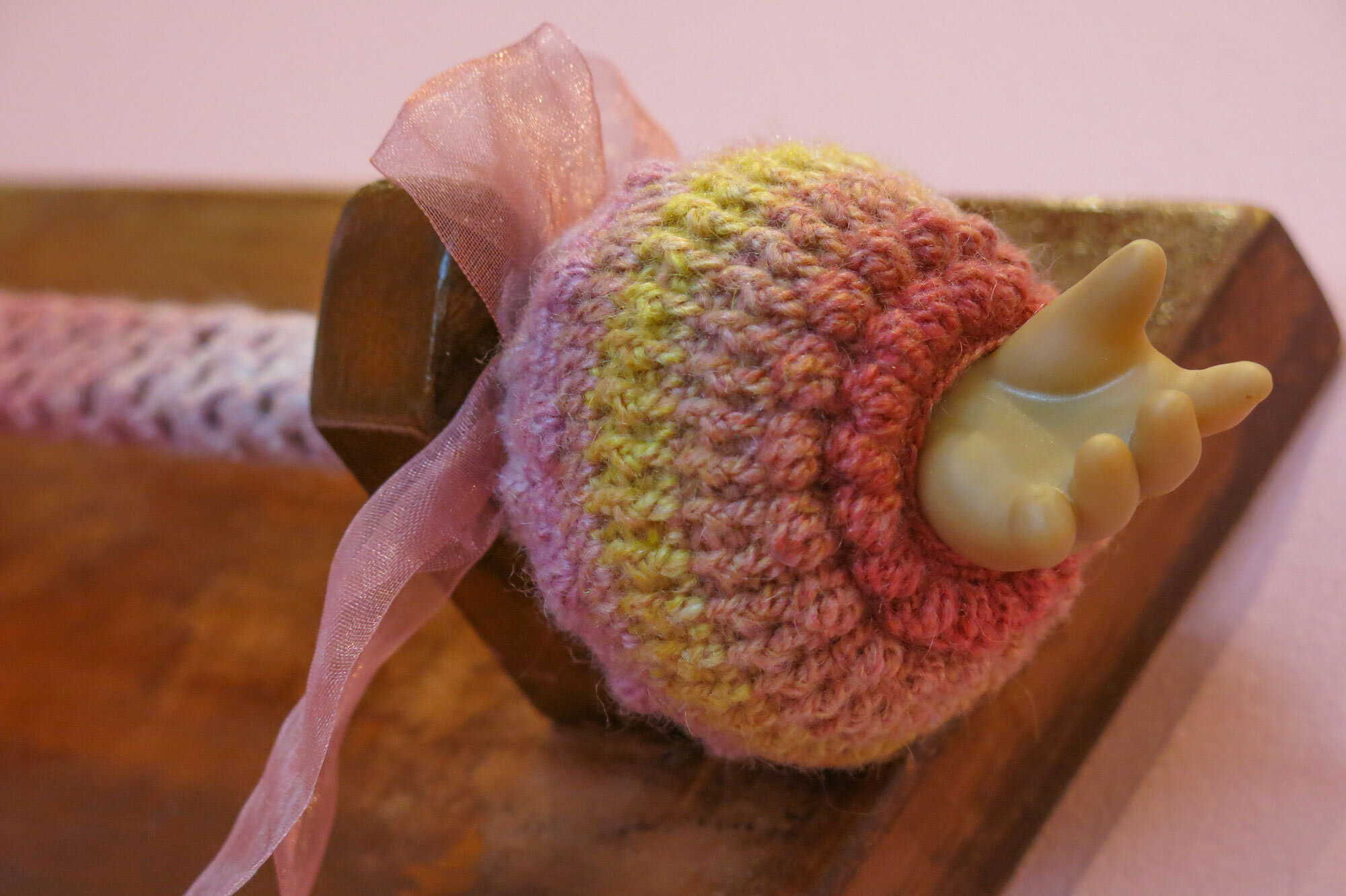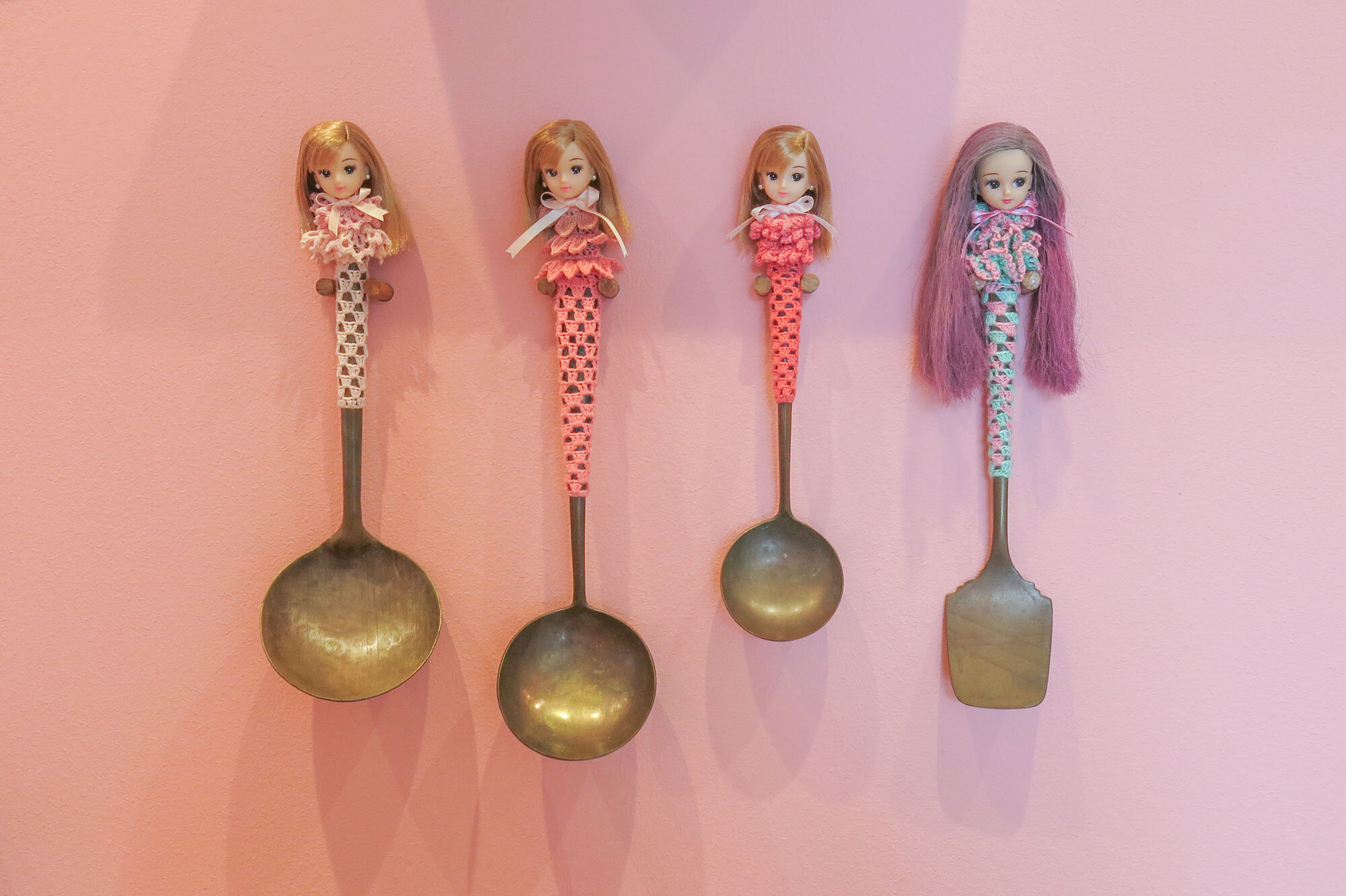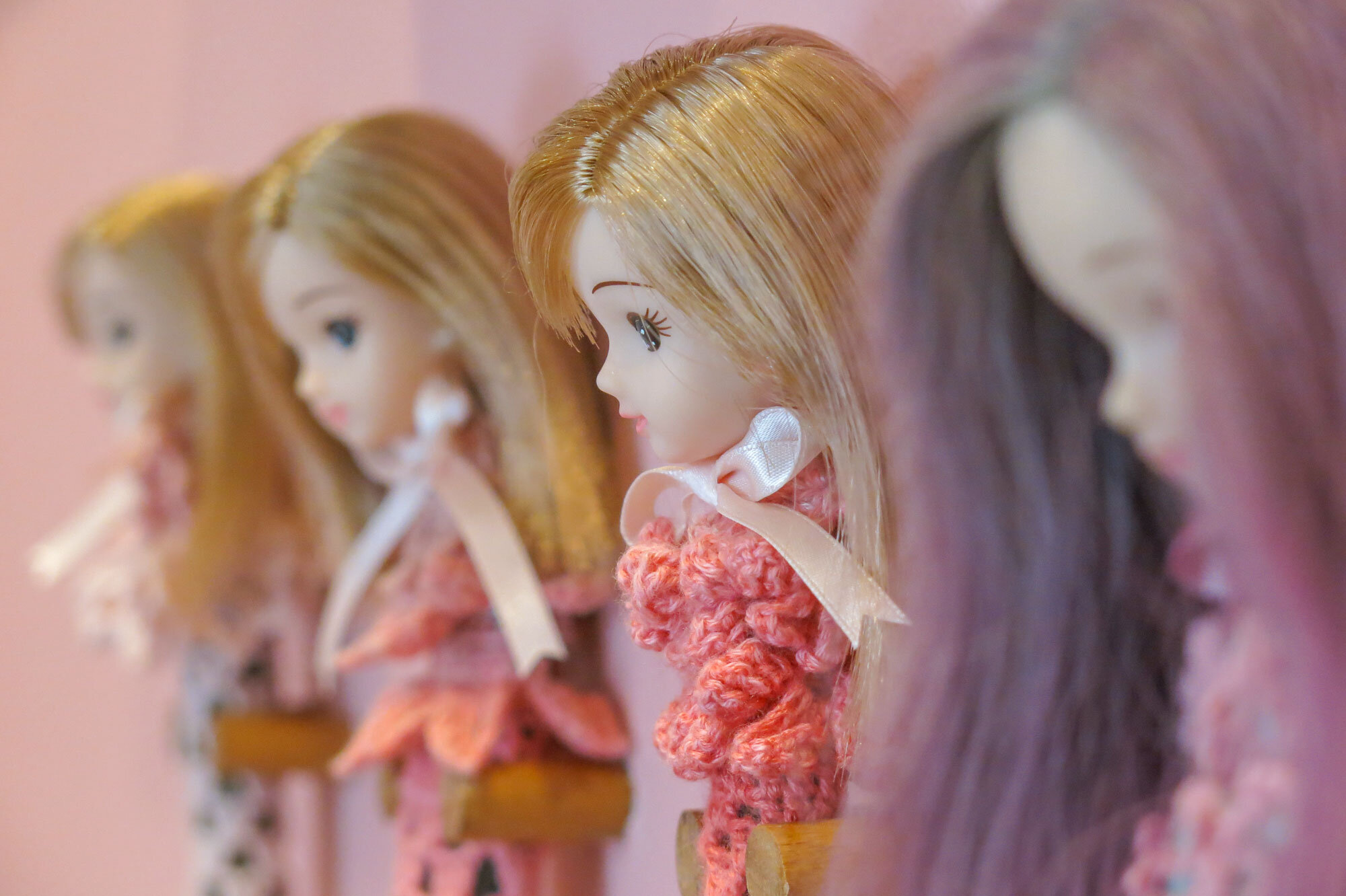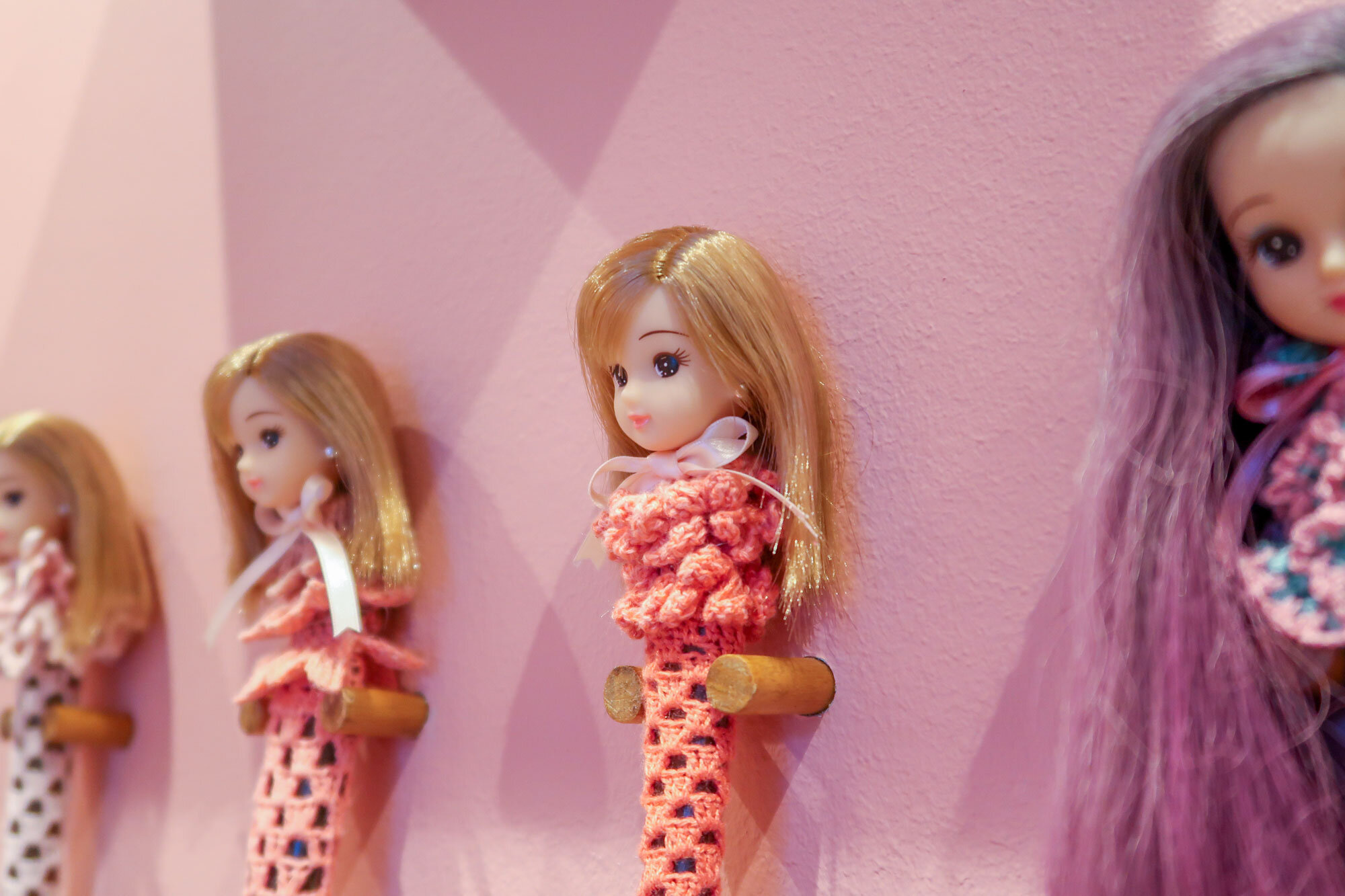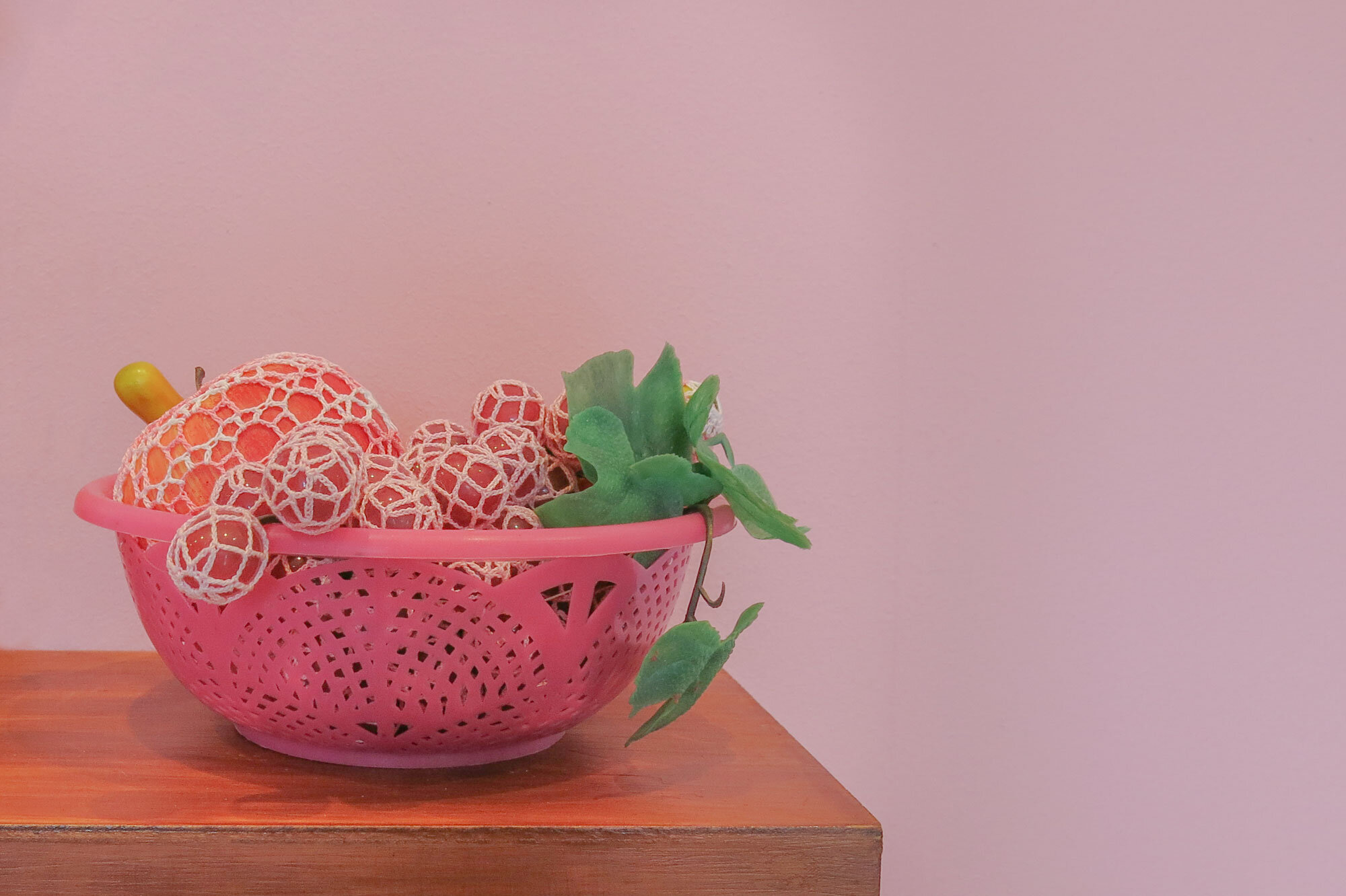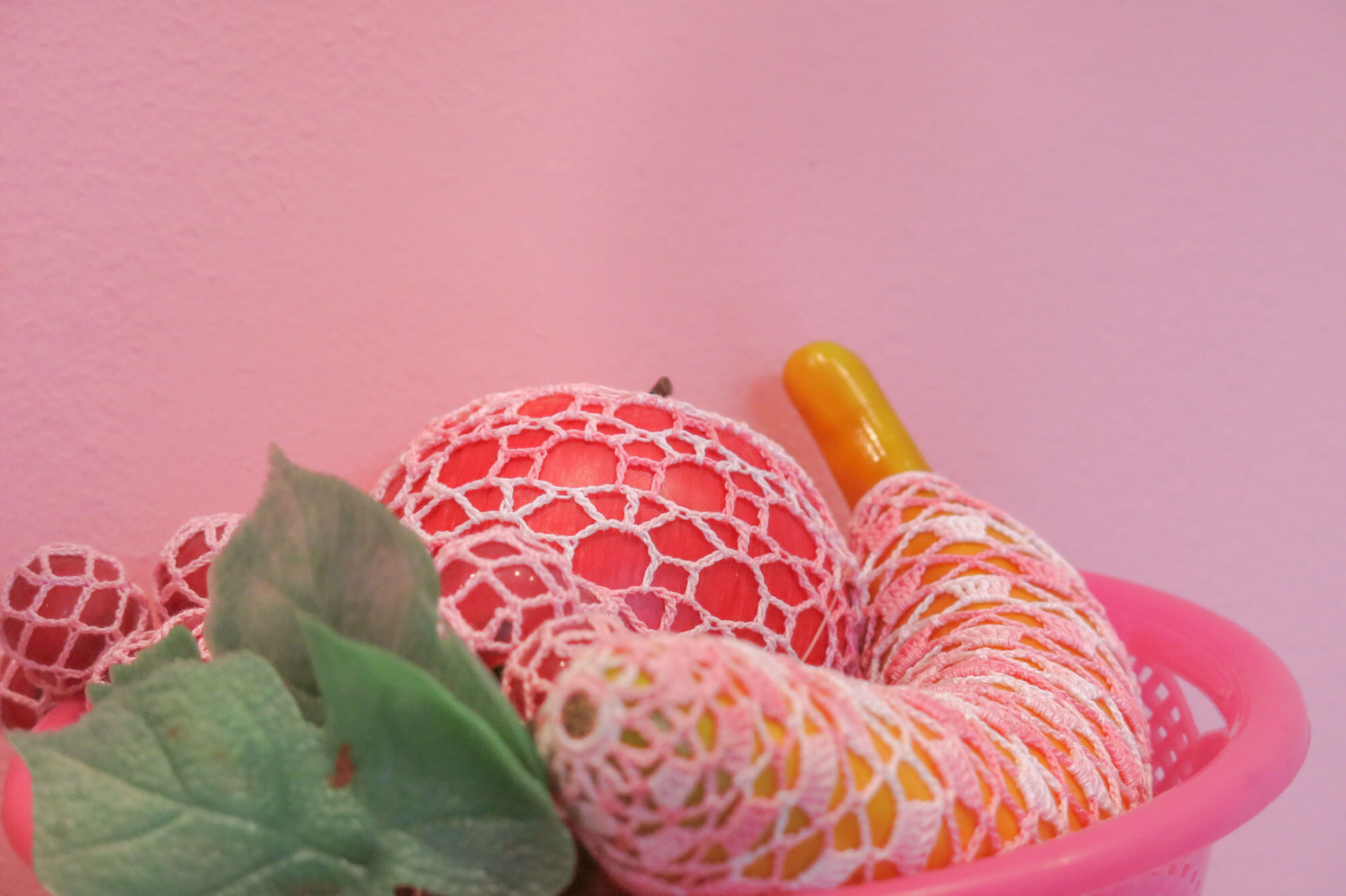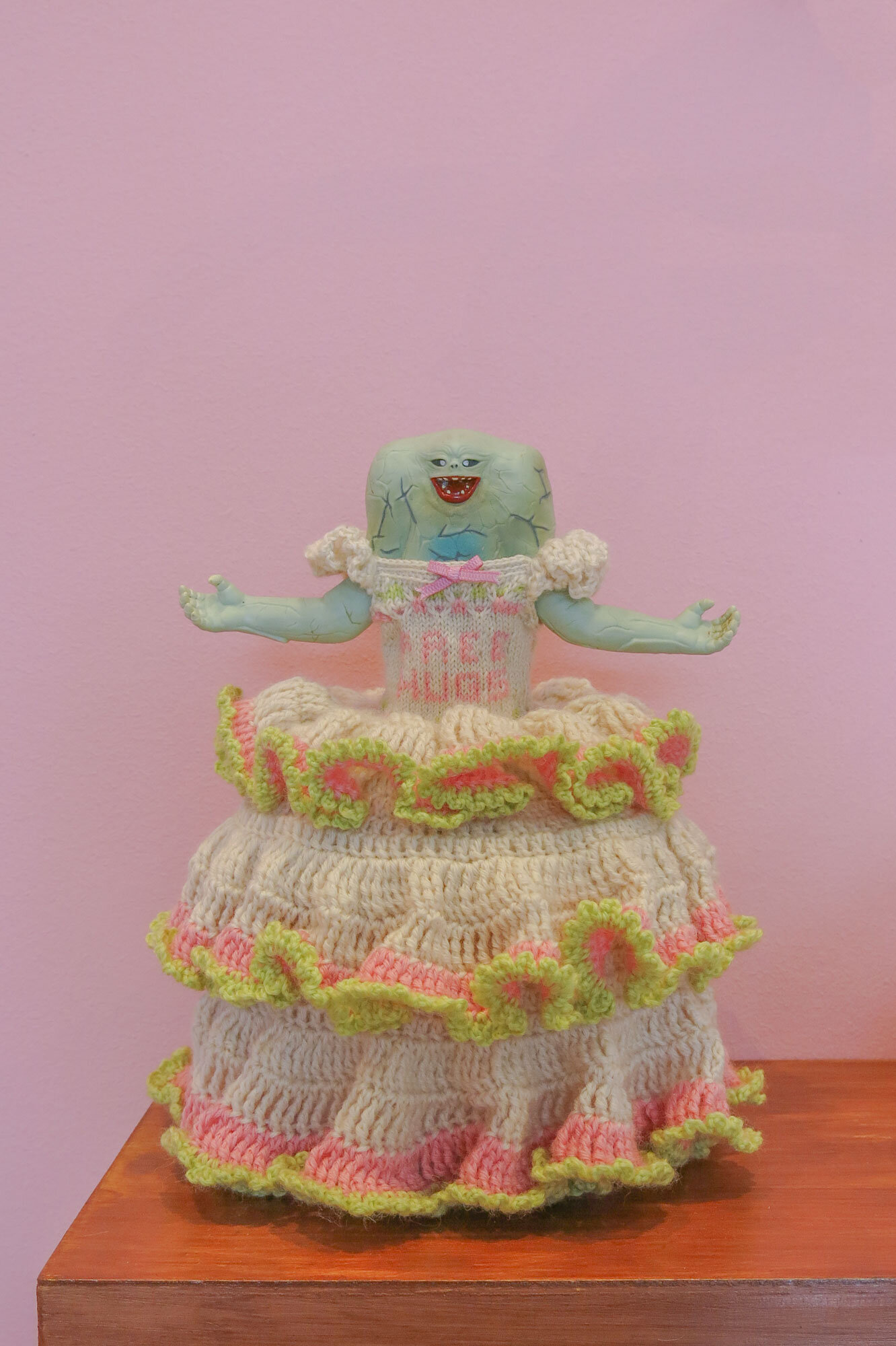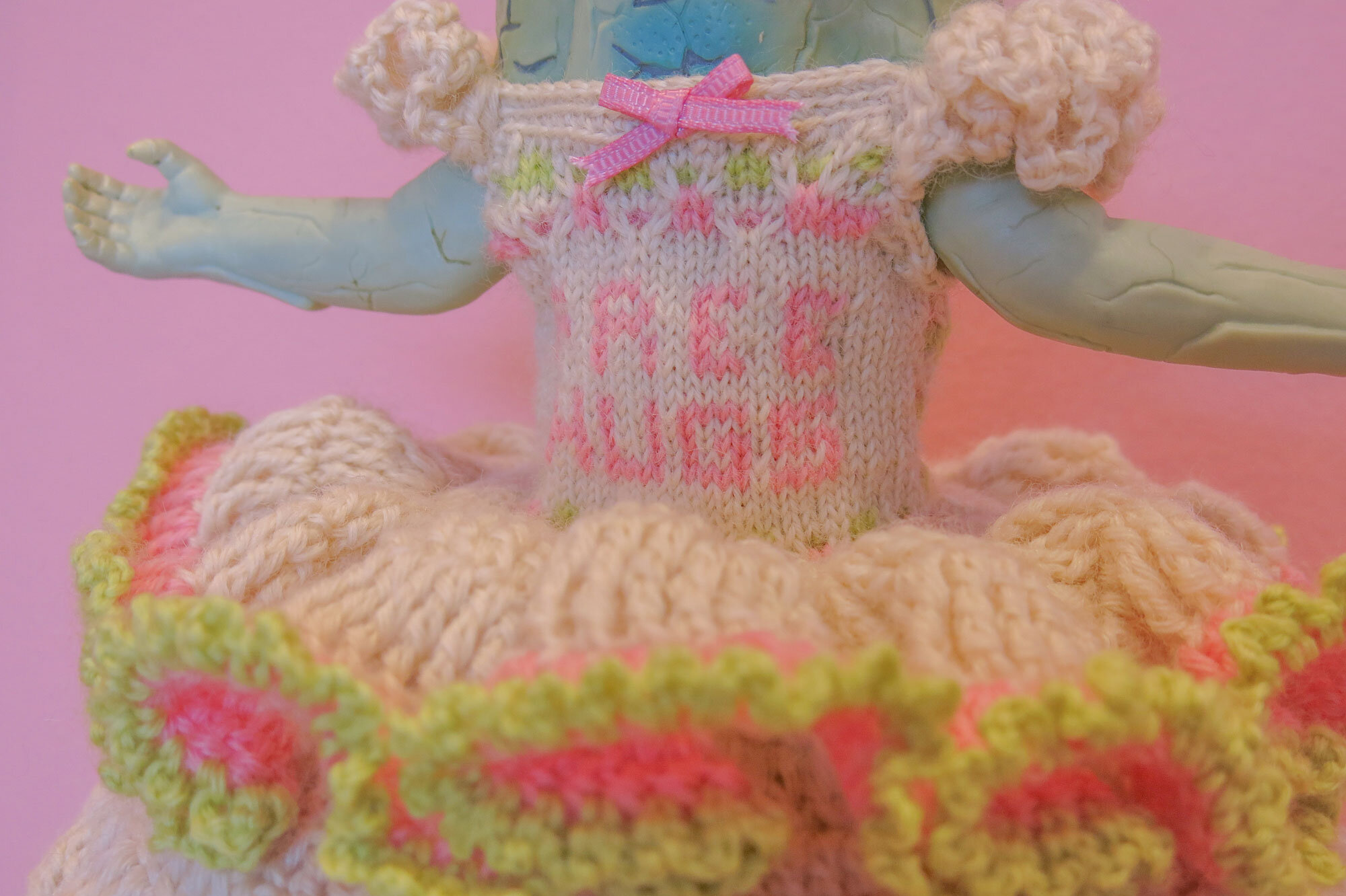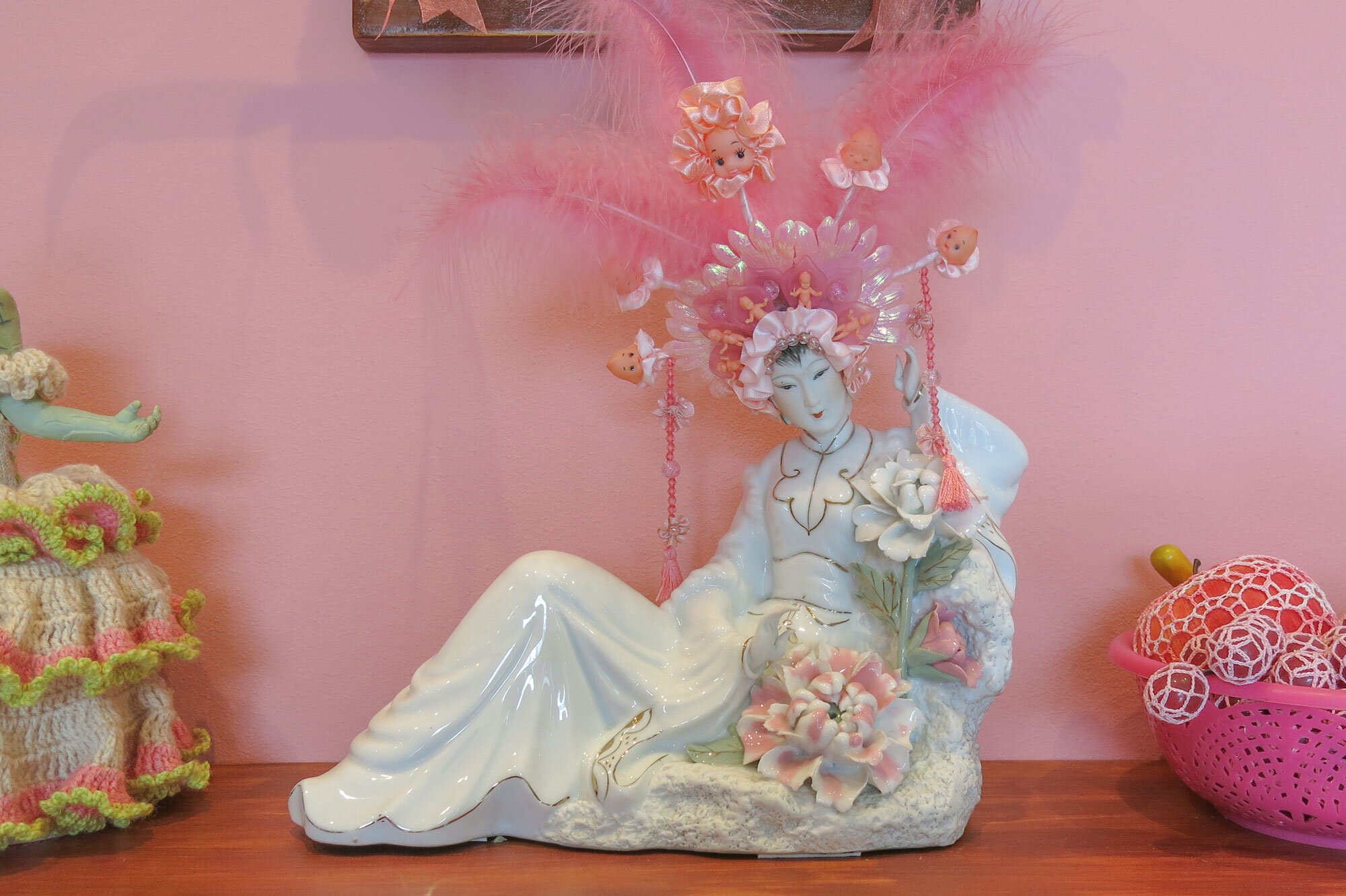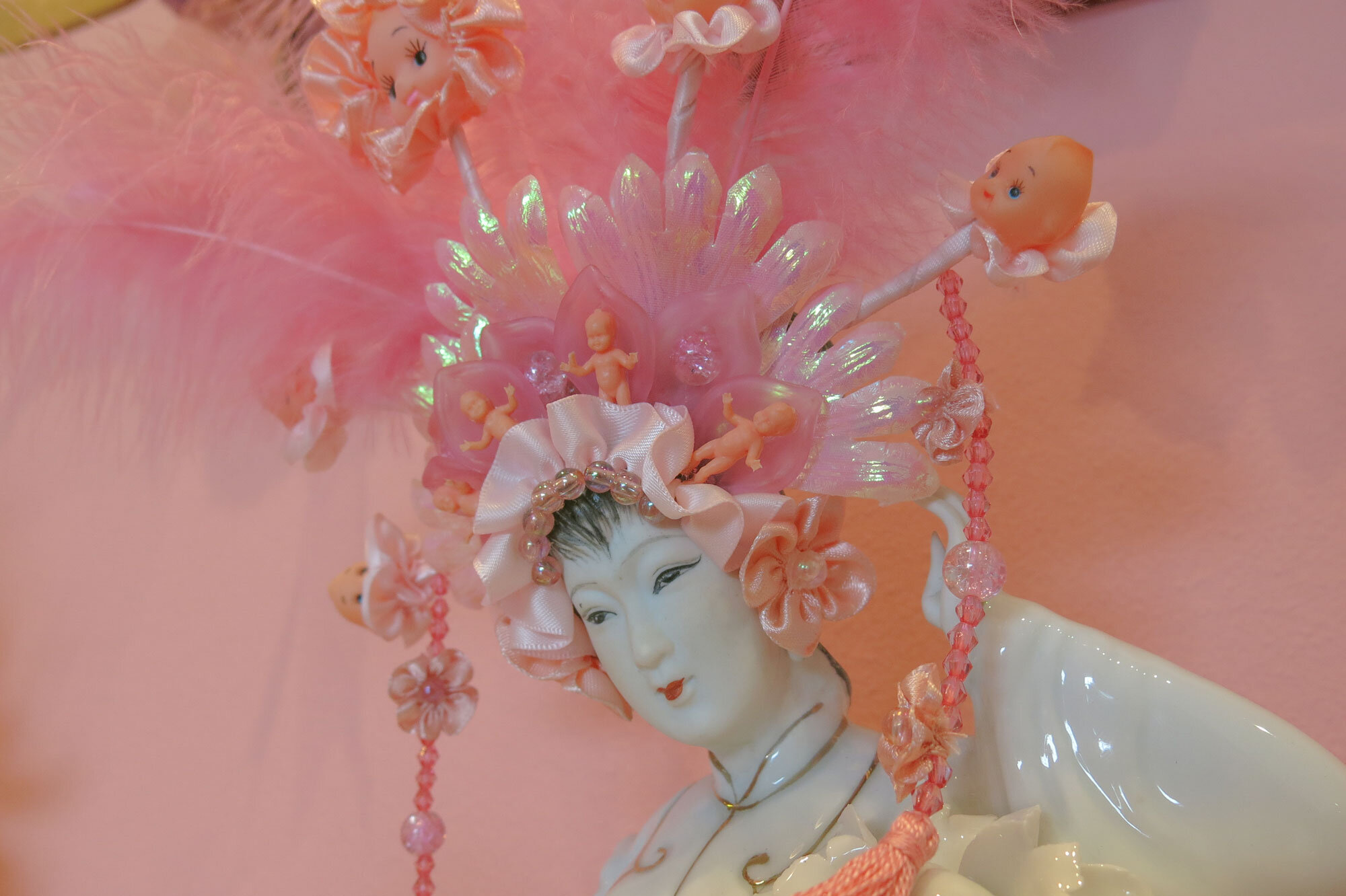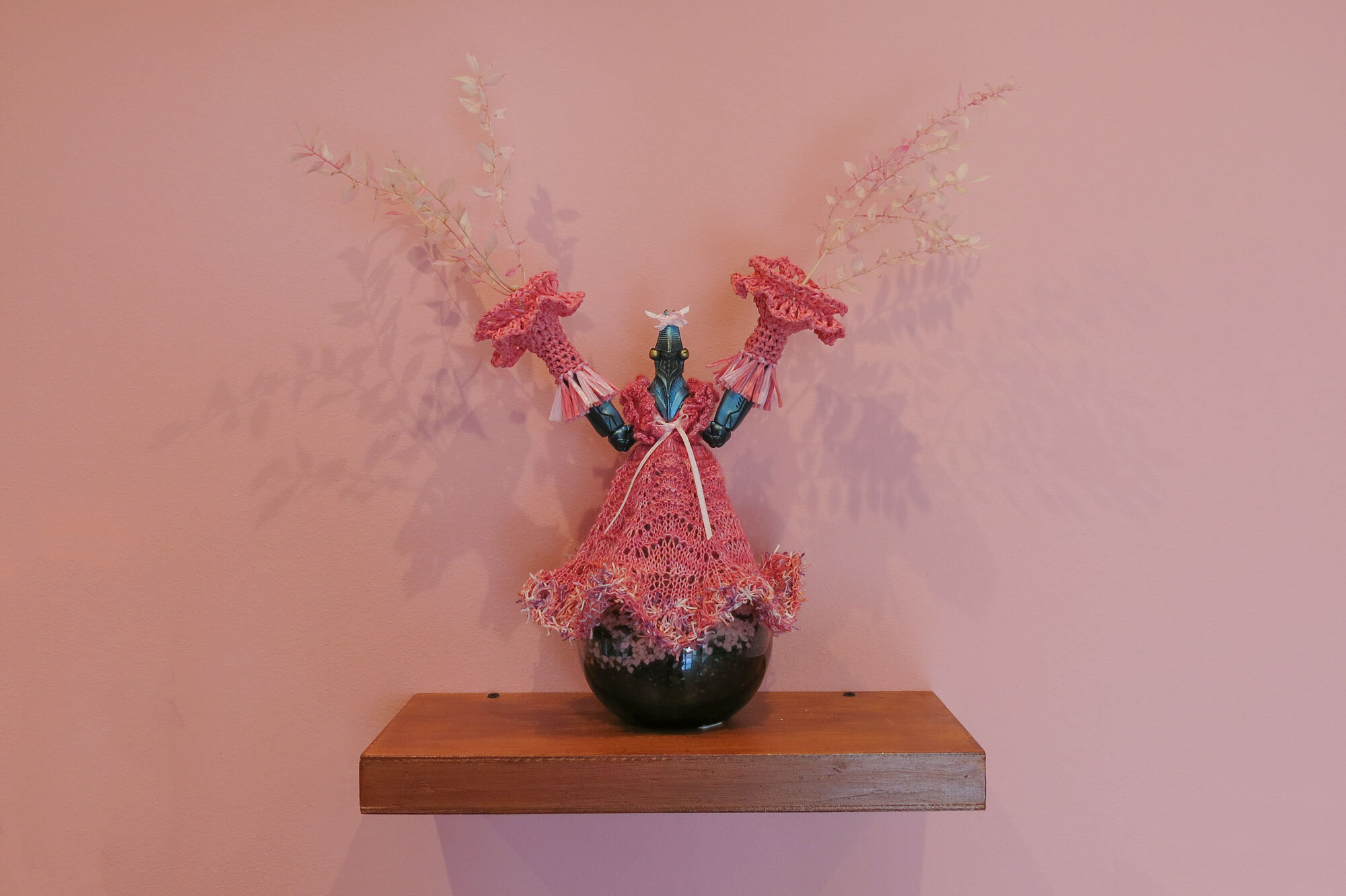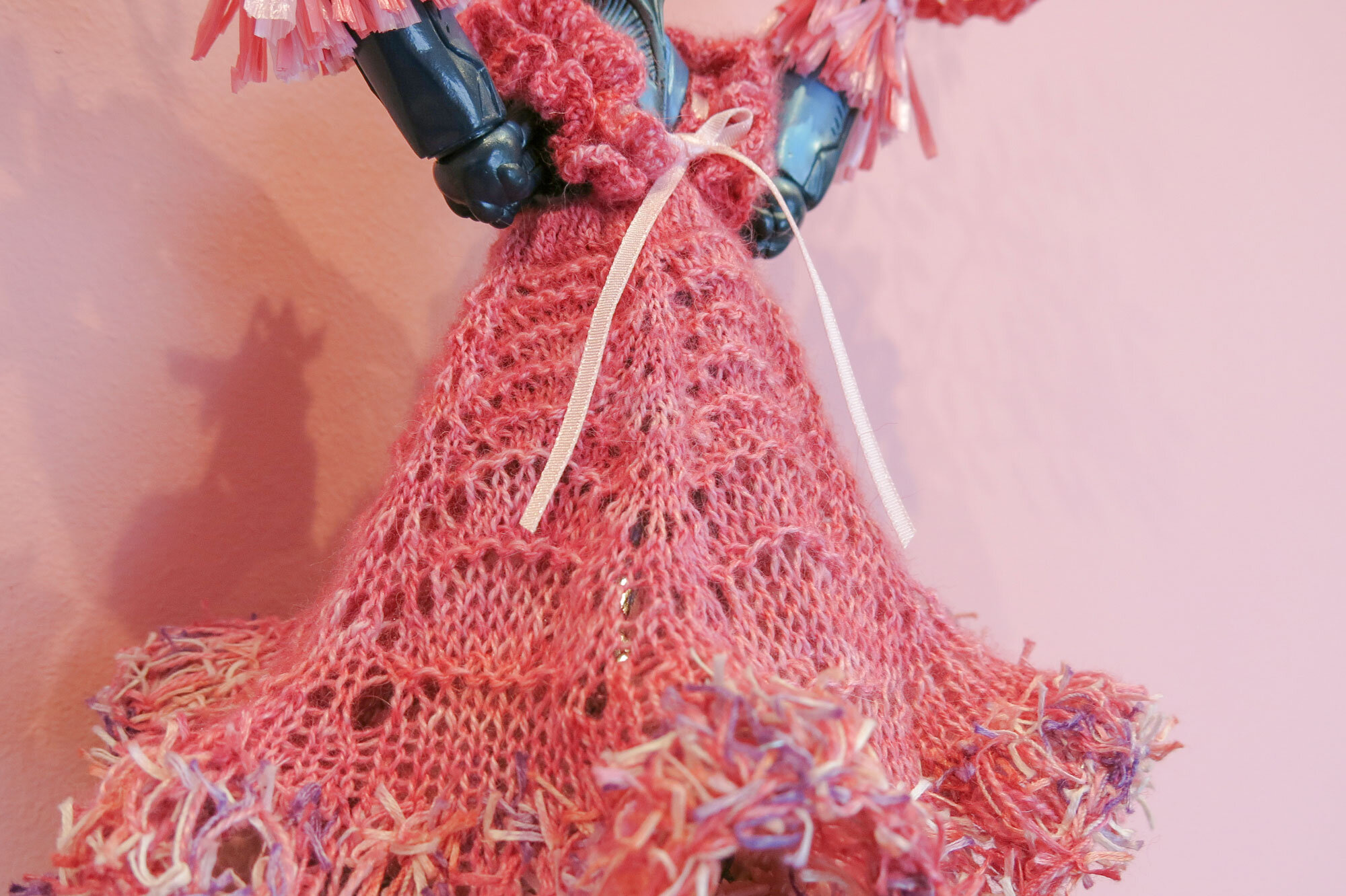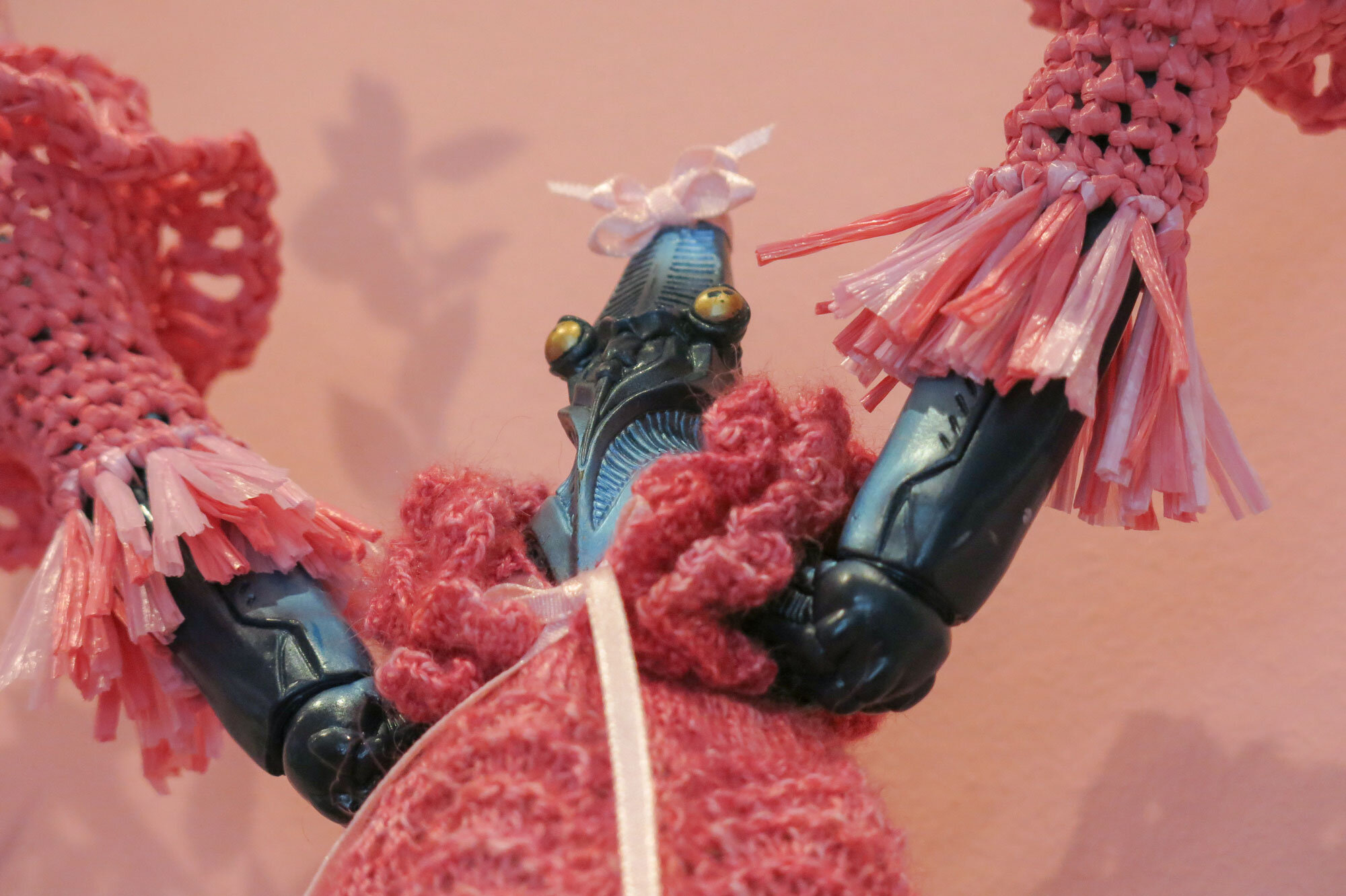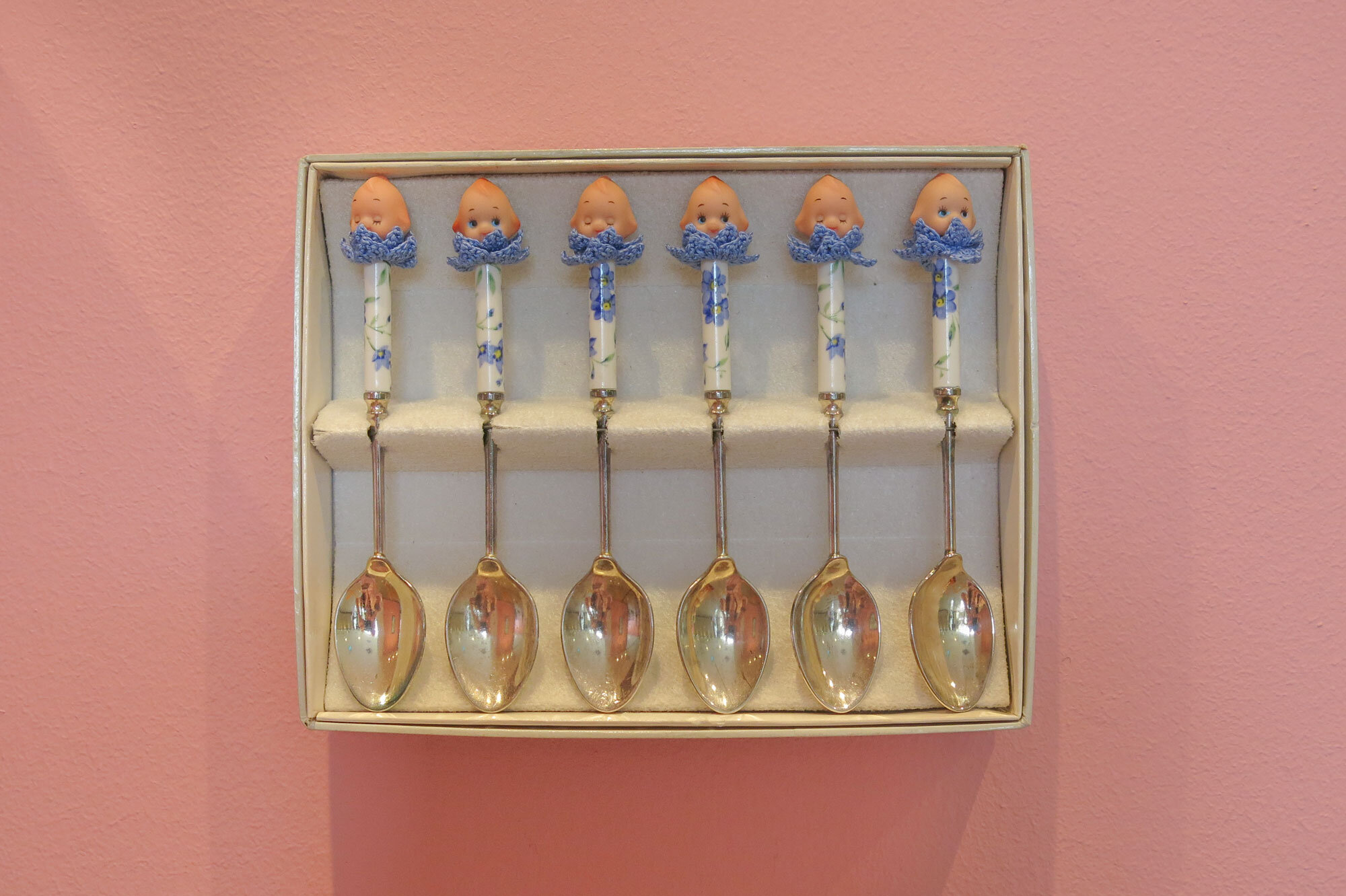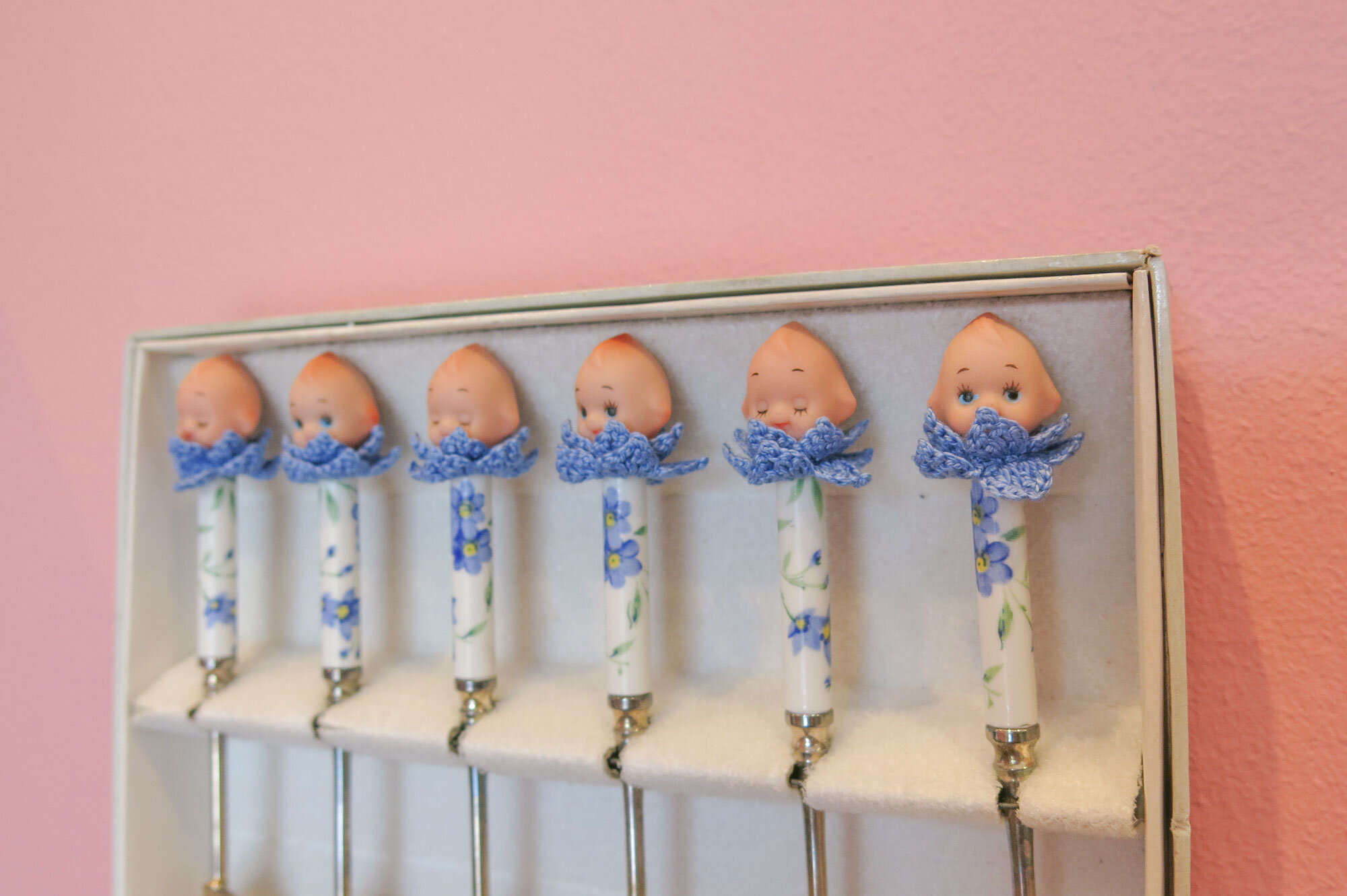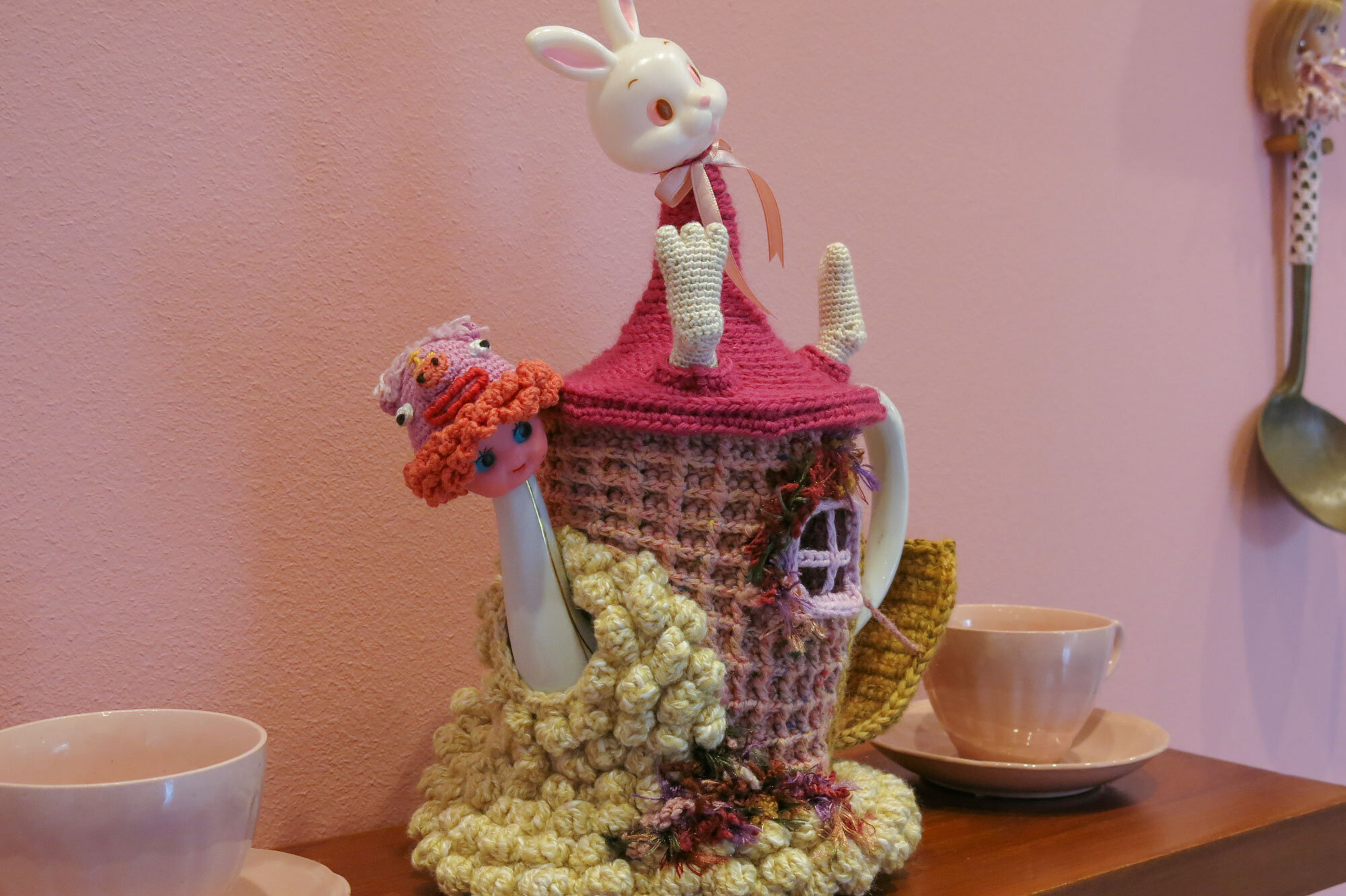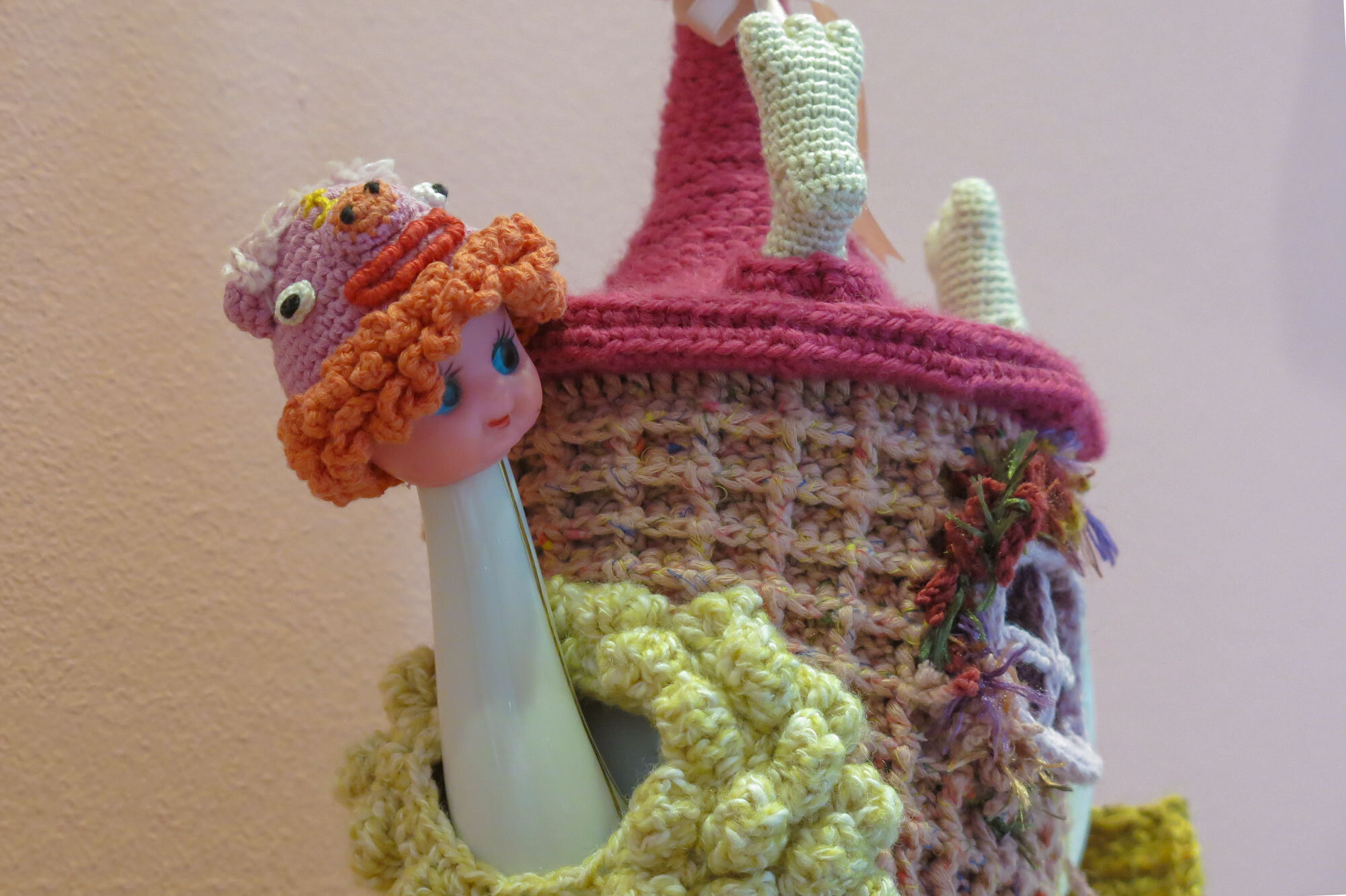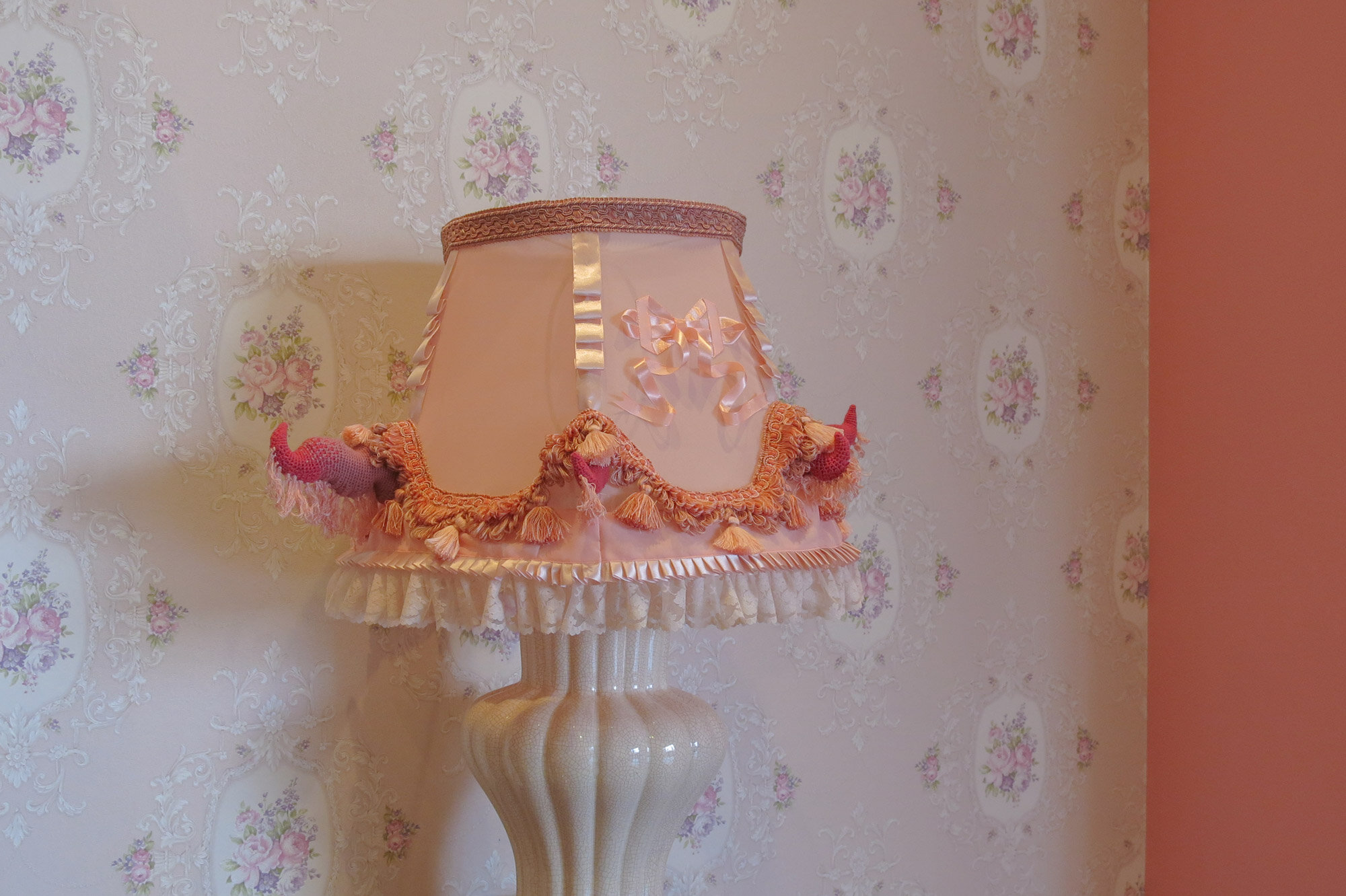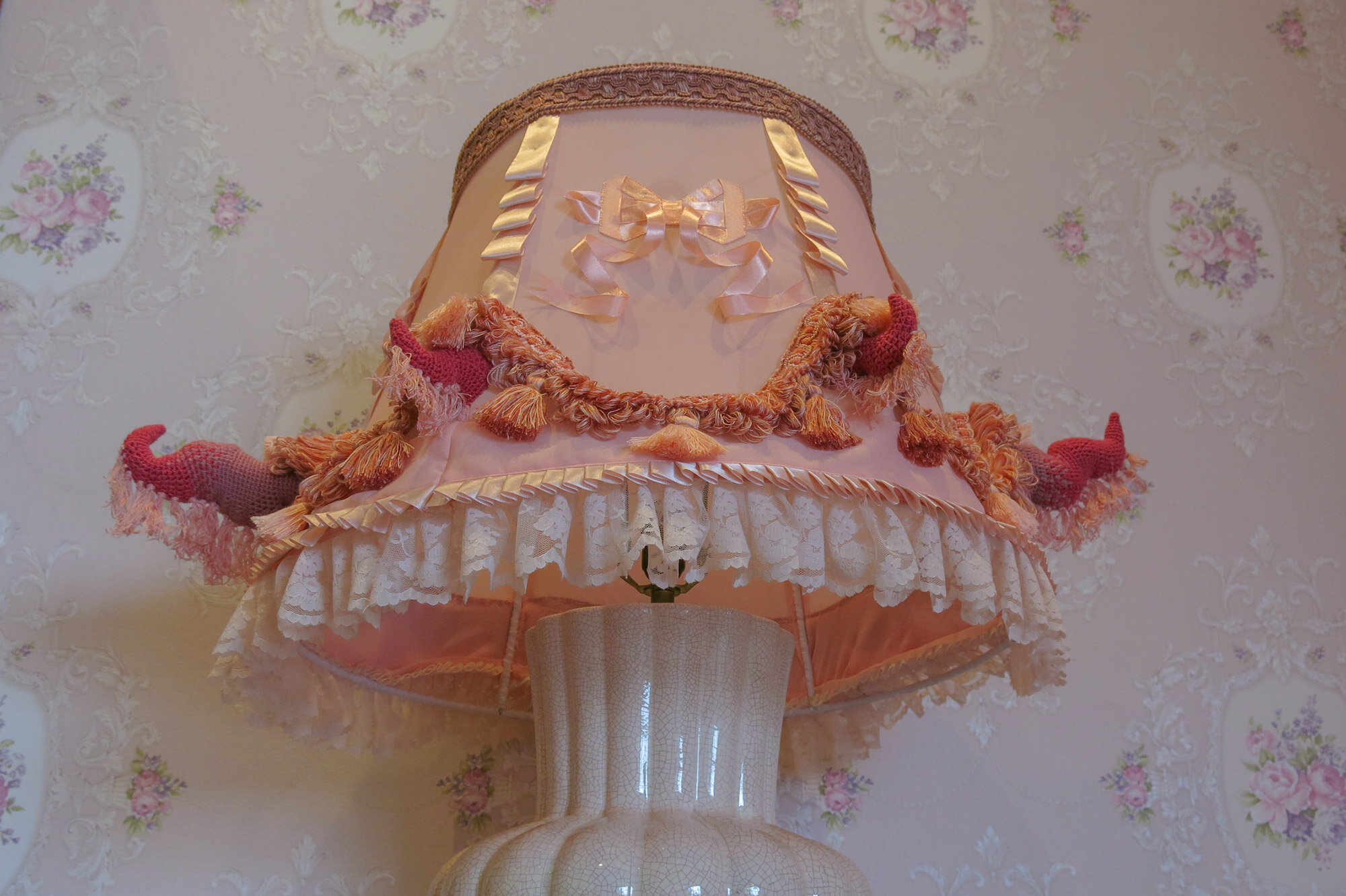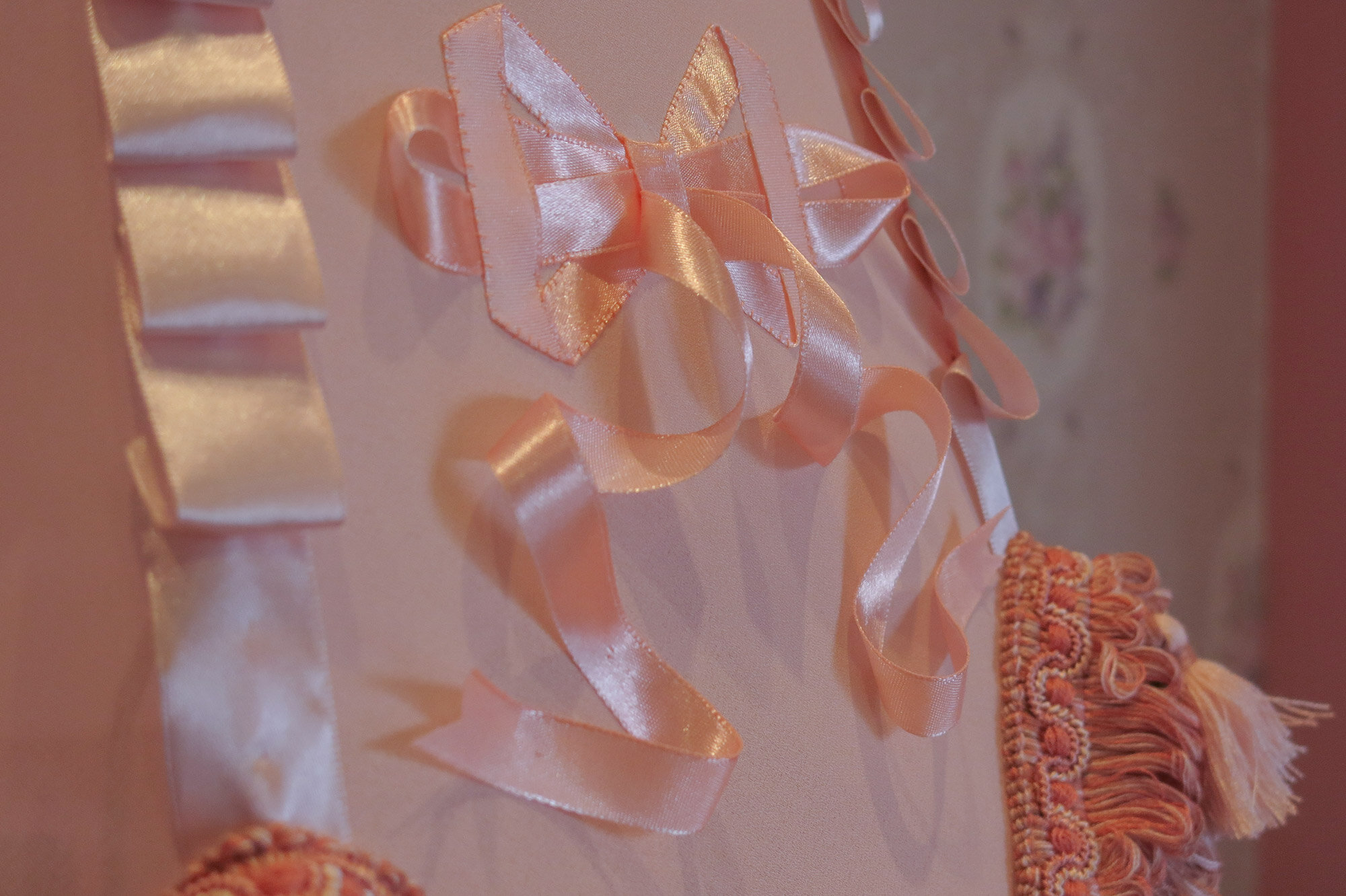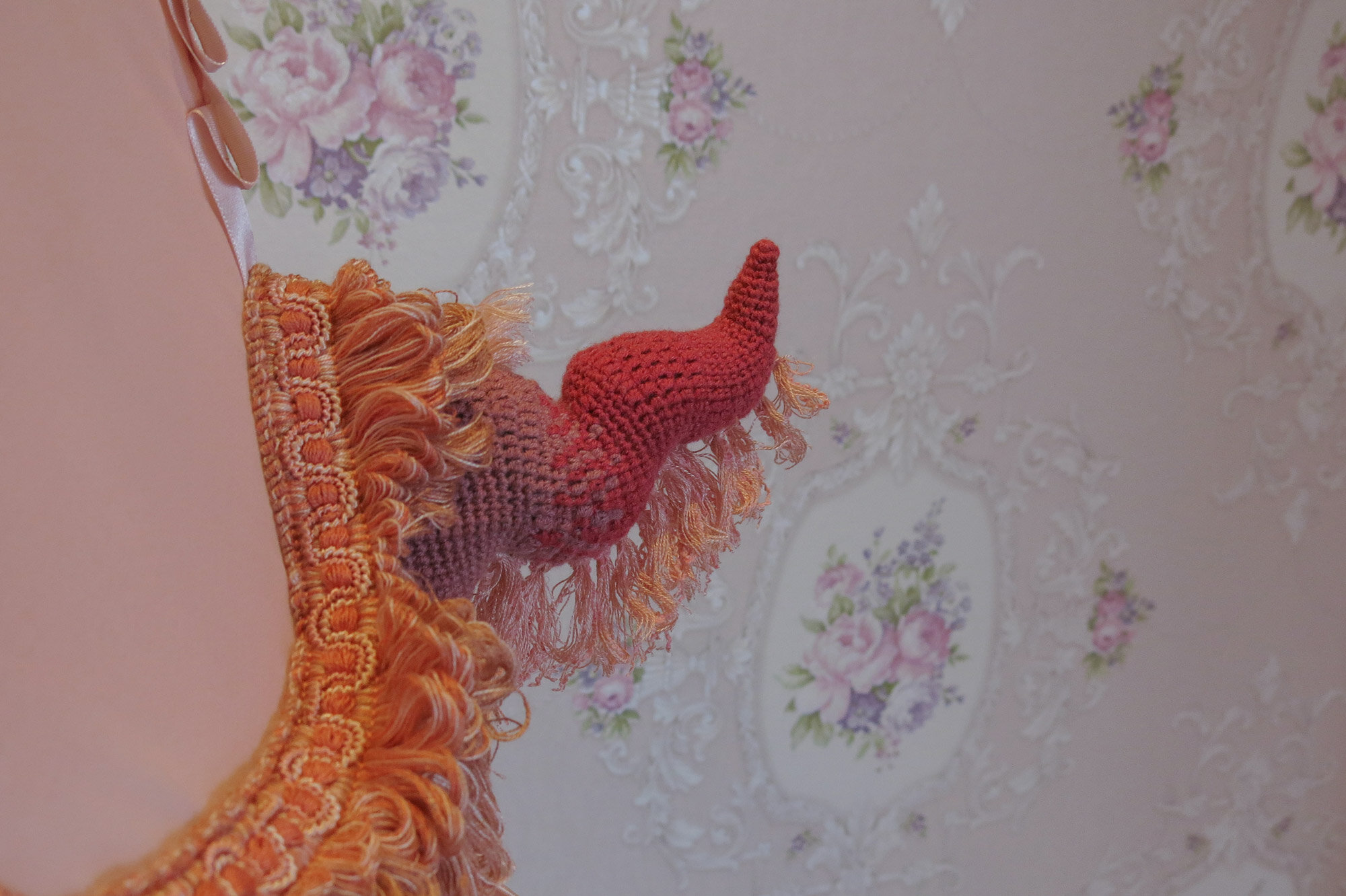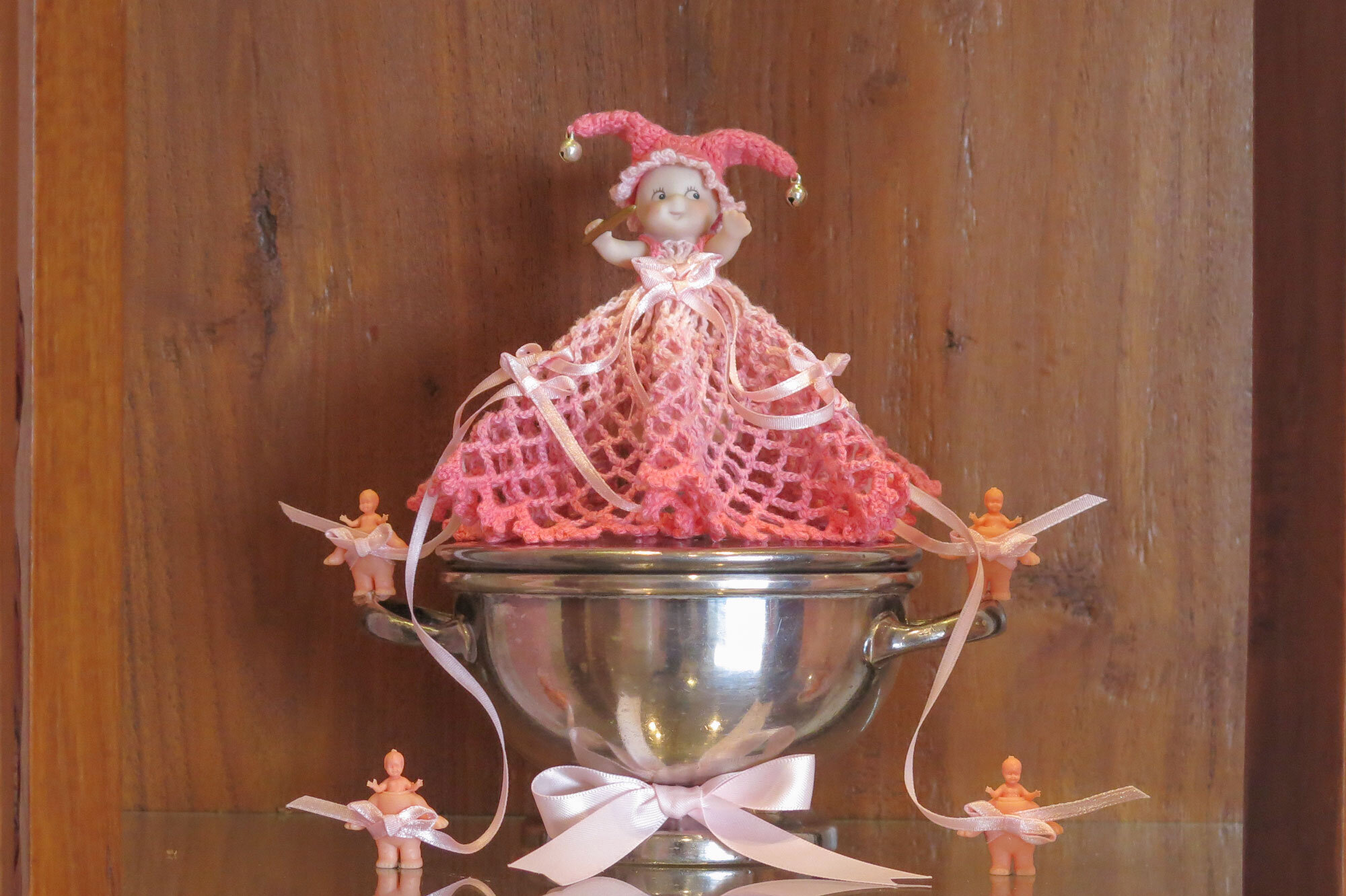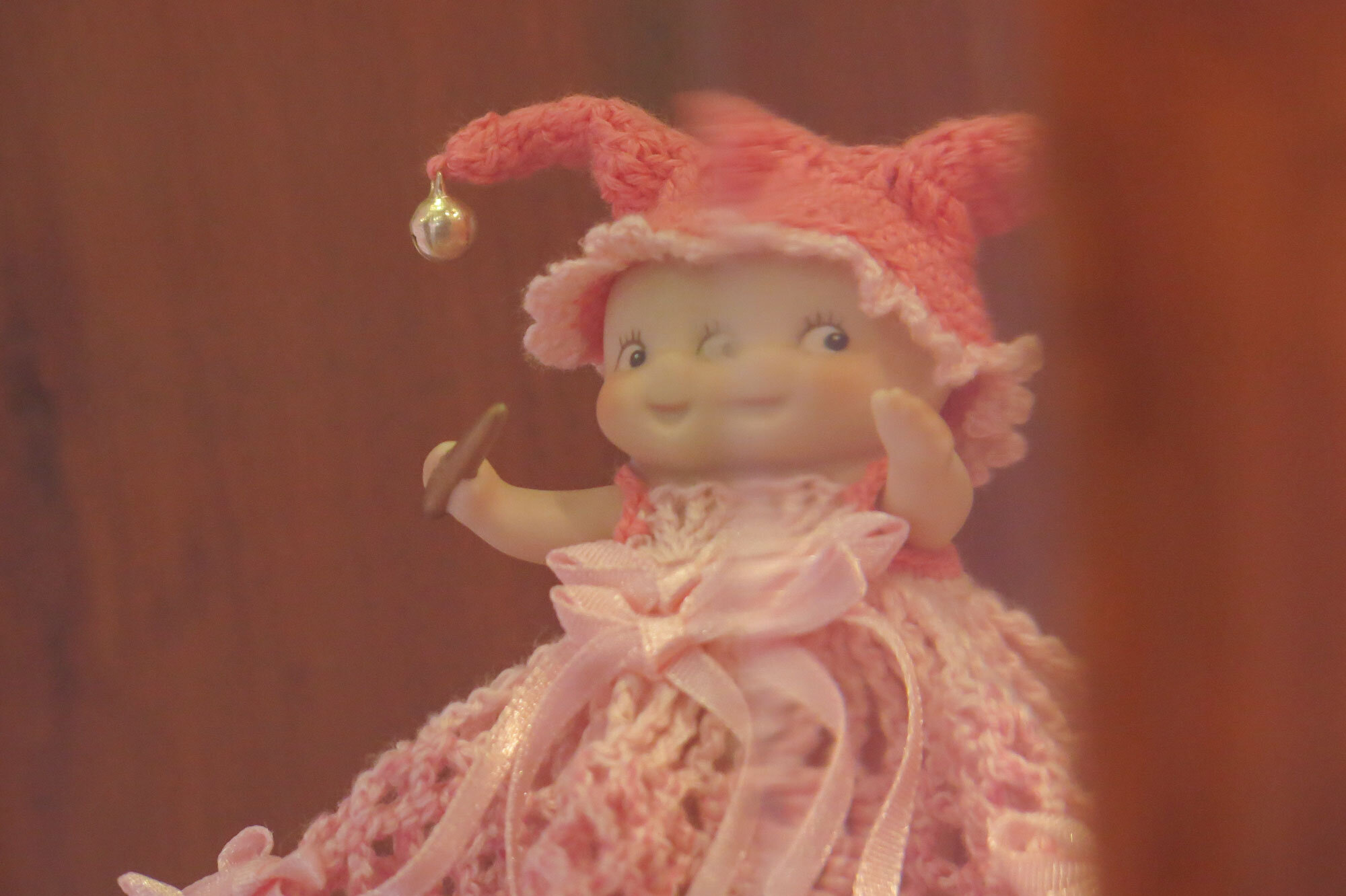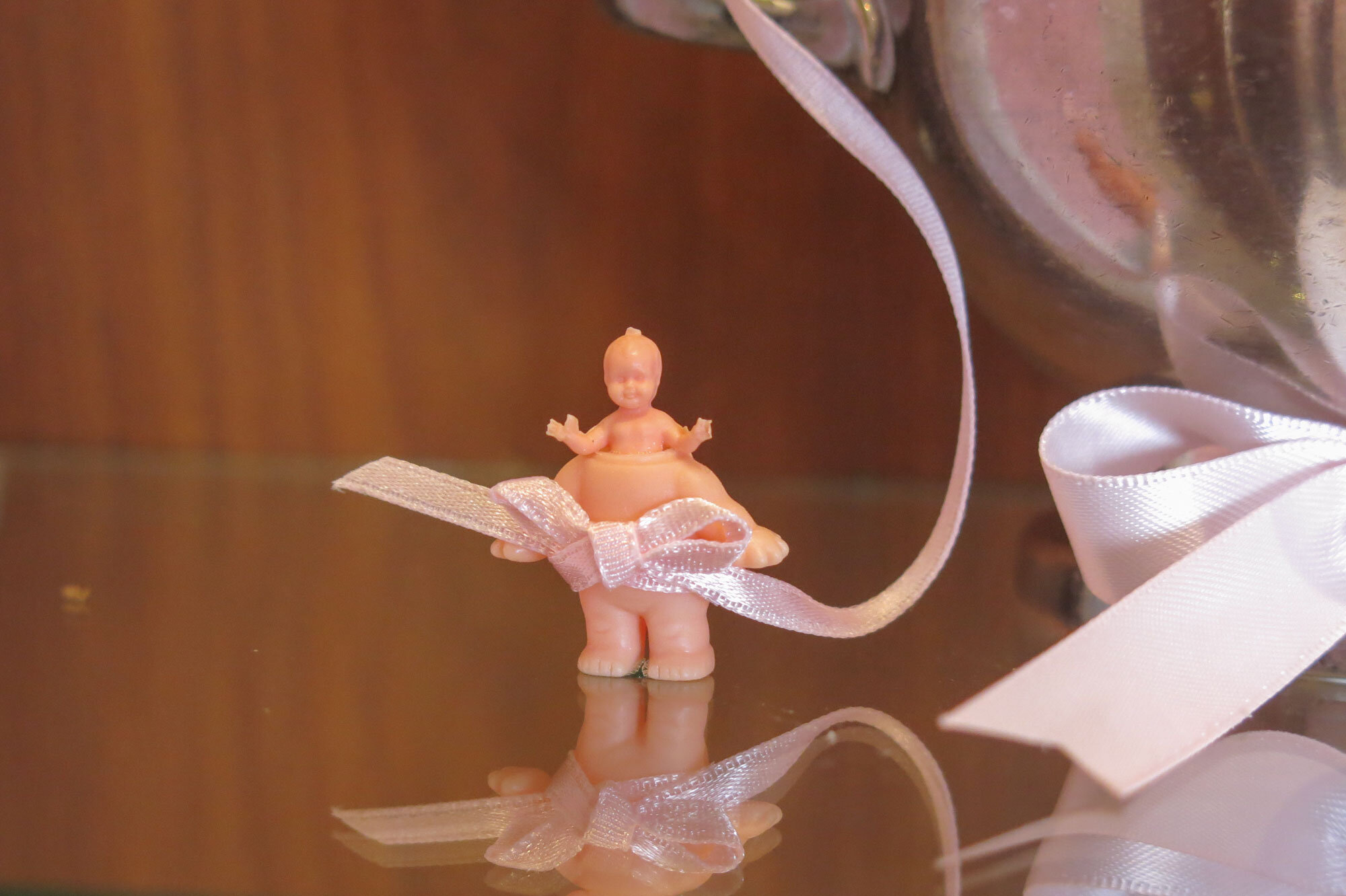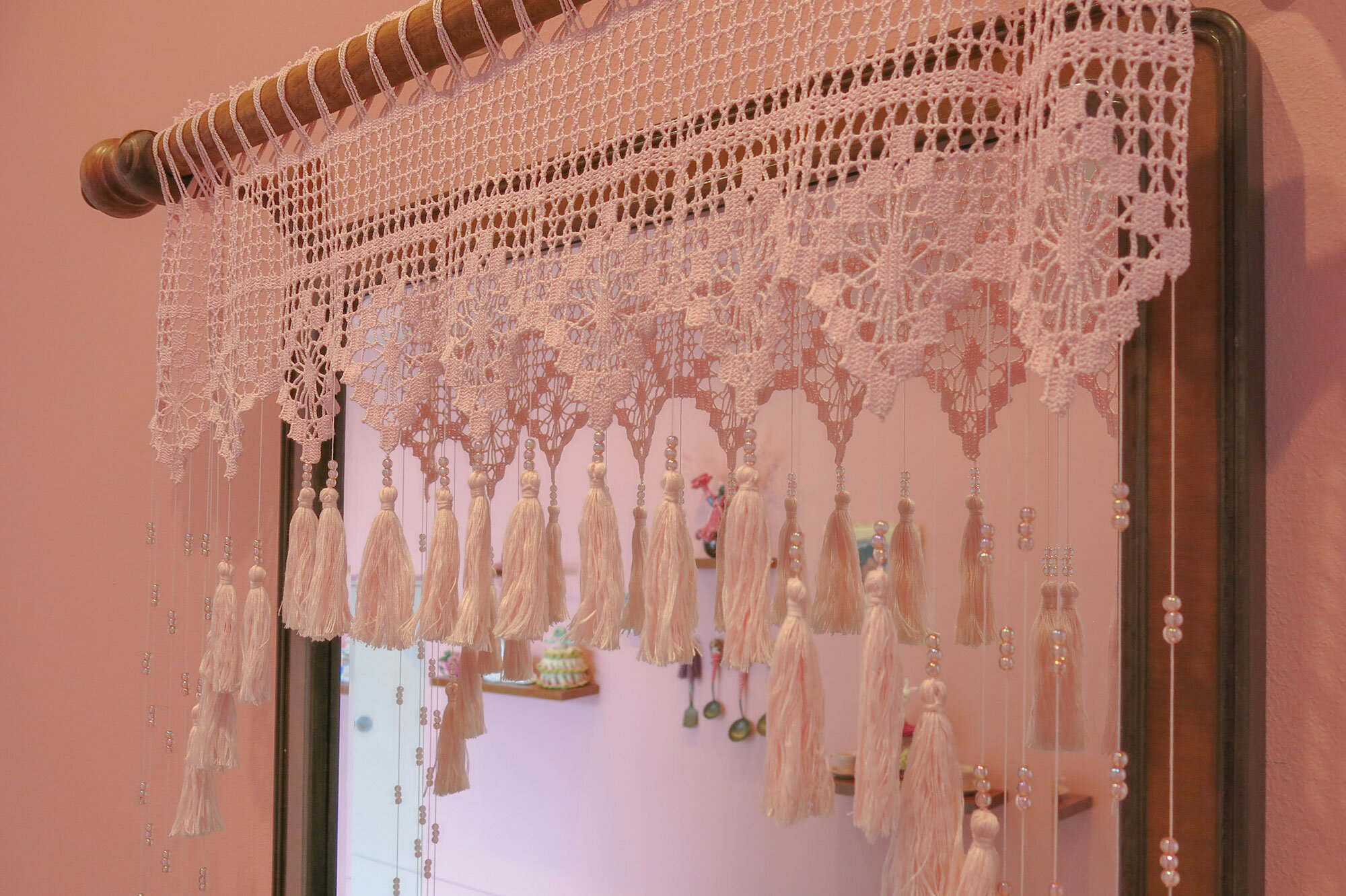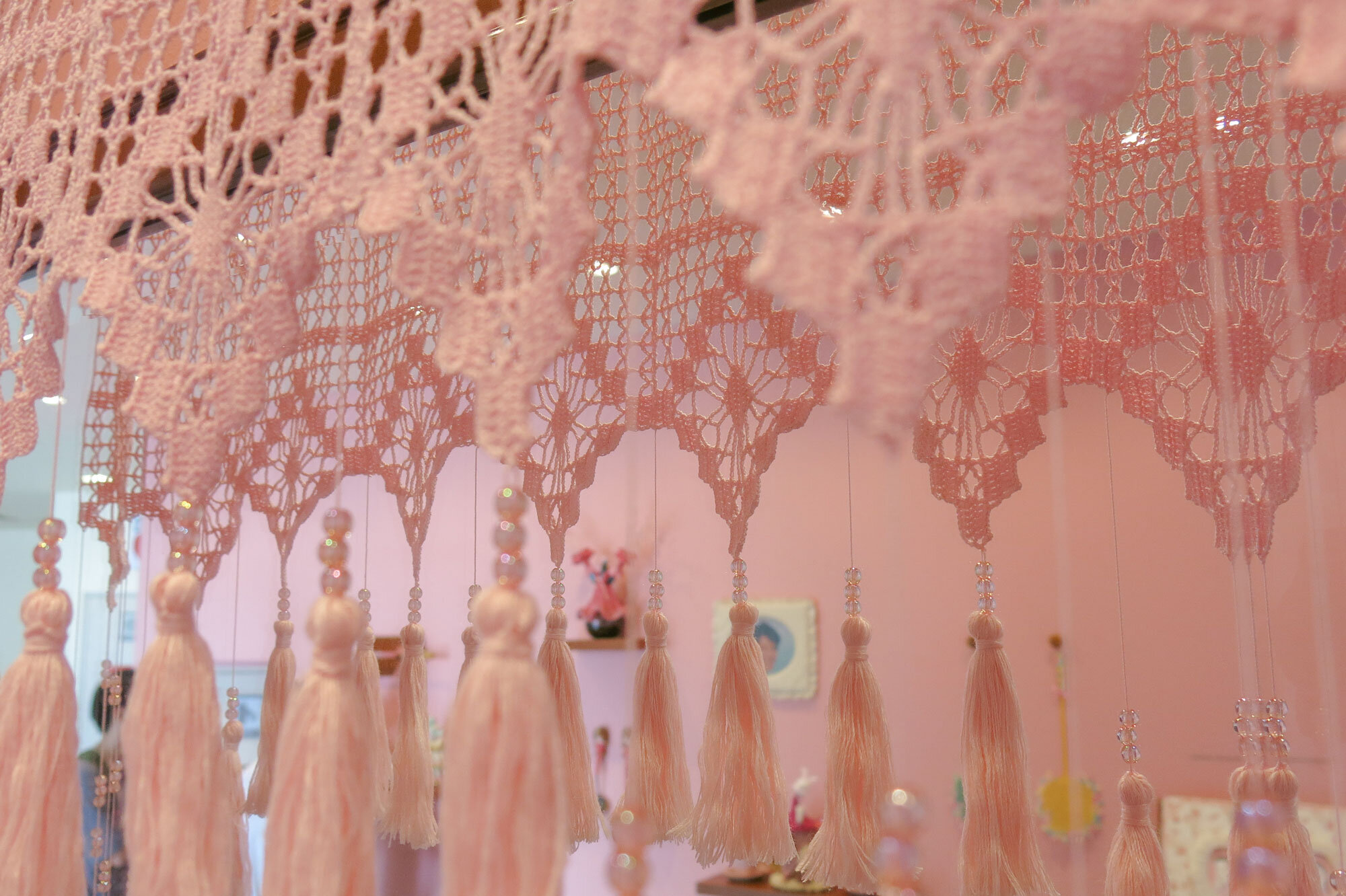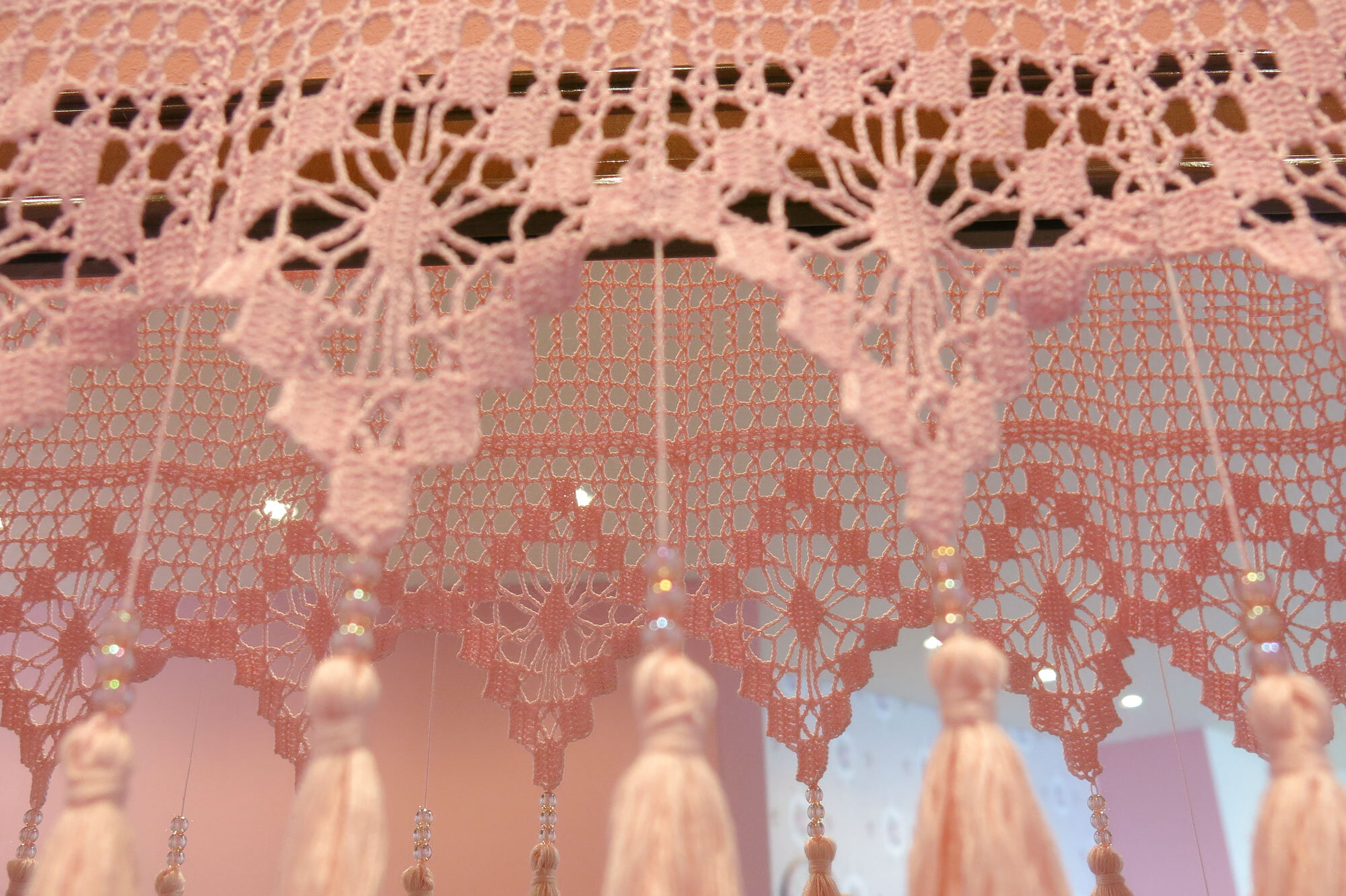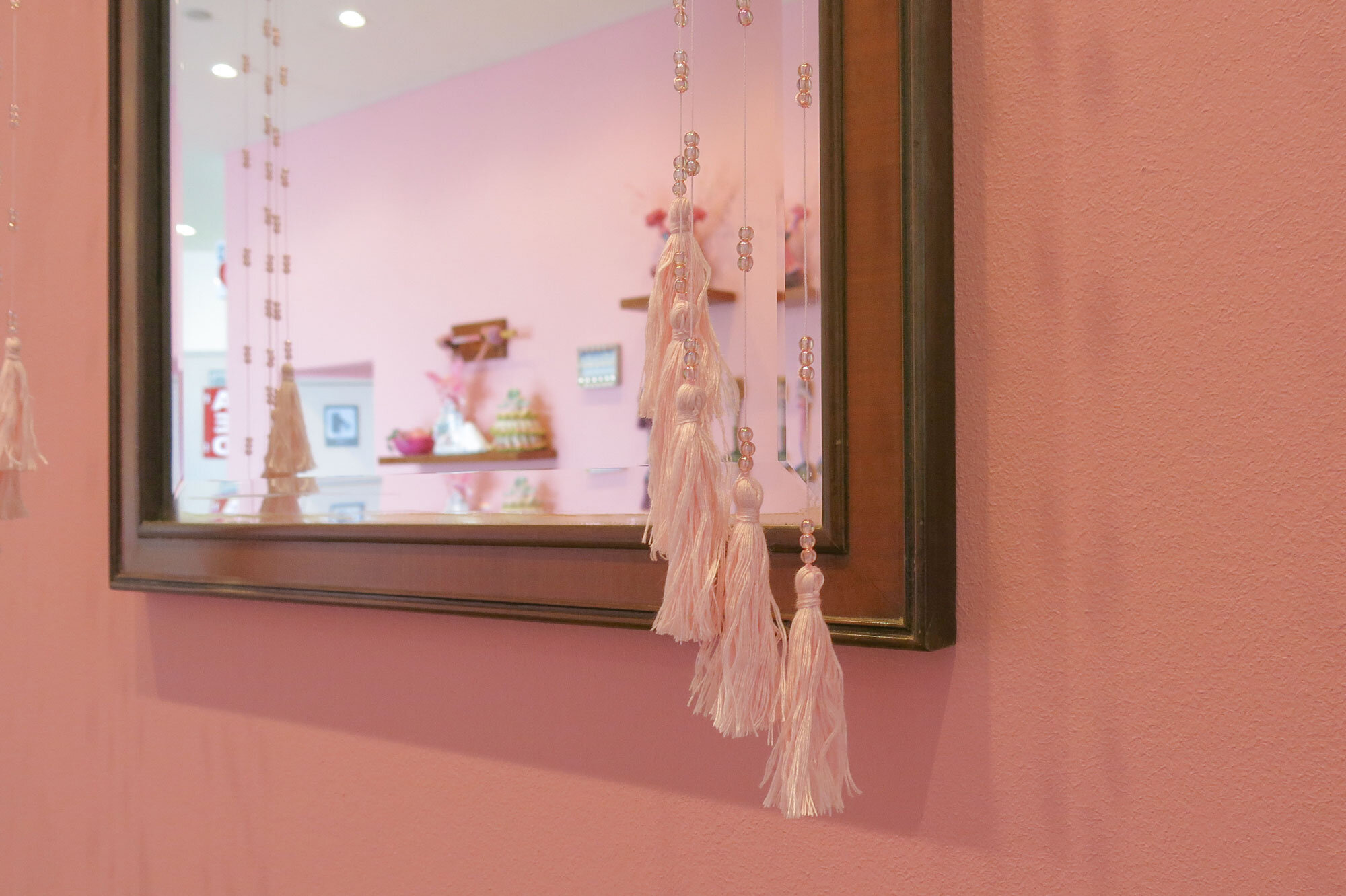Unfolding across the Esplanade Community Wall, kllylmrck delves into our understanding of how objects are evocative of the notion of home. Adorned in crochet, a hodgepodge of objects—comprising pre-loved furniture and everyday household goods such as fly-swatters—are embellished and assembled with scavenged items. While this act of artistic intervention humorously draws attention to these seemingly mundane items in our homes, the work also delves into knitting and crocheting as private spaces for reflection. Home Kitsch Home endeavours to capture the idiosyncratic nature of the objects we keep as emotional companions.
This exhibition explores the ‘empty nest syndrome’ experienced by housewives, who indulge in crafts such as crochet in the absence of their working husbands and children at school. The resulting assemblage is a reflection of the mindsets of these women in a sweet, nostalgic mirage of home where babies never grow up and finishing their crochet projects perfectly is the only proof of their self-worth.
In this exhibition, the artist explores nostalgia with objects from her past, her relationship with her mother with whom she used to craft with, as well as demonstrates her love for creating immersive ‘sets’ that inevitably links a persona (this time, a housewife) to it.
“Home Kitsch Home” was commissioned and presented by Esplanade – Theatres on the Bay, Singapore at the Esplanade Community Wall from 17 January – 5 April 2020 as part of its VISUAL ARTS programme during Singapore Art Week 2020.
kllylmrck Centrepiece
This centrepiece measures about 80cm x 80cm, crocheted with a 0.9mm hook. Such centrepieces are a main feature of 'Mum Art', so commonly used to cover sofas, TVs, and dining tables. The pattern was designed by me with references from http://antiquepatternlibrary.org/. The text was from an embroidery pattern book c. 1885, and the surrounding 'pineapple' doily from the 1950s. One recurrent motif in this exhibition is the ribbon, and in this centrepiece you see a double ribbon motif I designed.
In old filet pieces, it's common to see words like 'bread' or rhymes; thus I wanted something 'modern', in contrast with the classic doily. Much like how people are crazy about covering themselves with brand names on bags, shirts, and what-not, I decided to brand the centrepiece with my name, ‘kllylmrck’.
2. Diary
This diary, made entirely by hand, contains floating thoughts as I made each and every object in this exhibition-- some relating to my own past, and reflections on my childhood when my mother used to crochet.
The cover was illustrated by Sharon Yang (PAYNK) ; me posing in an old-school studio portrait style.
I quilted the back of the book, reminiscent of the blankets or quilts made by grandmothers or mothers for babies. The inside of the diary is old-school printed paper found in an old bookstore, which I stitched together. The entries are written in my mother's handwriting; a ‘forced’ collaboration where I made her ‘copy’ out my thoughts disguised as random passages.
3. Fly Swatters
What are the thoughts of a housewife who would crochet over a functional item, and in that making it not functional (I would imagine you wouldn't be able to swat a fly with the extra resistance)?
4. Backscratcher
Another item that is very familiar in the Asian household, a back scratcher. The Japanese name is a lot more poetic-- it's known as 孫の手, which translates to "grandchild's hand".
This exhibition highlighted the 'Empty Nest Syndrome' many housewives feel, which lead them to indulge obsessively in crafts. Rather than to simply finish a project for its functionality, these housewives seek a sense of purpose when their lives dedicated to 'serving' the family become empty as the children grow up and lead their own lives independently. Often, motifs of babies and dolls are included in these crafts, perhaps as a subconscious way of keeping their children in that frozen memory of infancy and closeness.
The backscratcher serves as a functional tool to relieve a physical itch; but does it relieve the itchiness of the heart to find a new calling in life? Inspired by the Japanese namesake, this piece juxtaposes the 'human touch' with a simple tool created to serve its function.
5. Sister Spoons
7. Fruits Basket
I think this is one of the pieces that best translates the image of a housewife crocheting random, 'useless' things to while her time away. Each fruit is entirely covered with lace crochet, including each grape.
6. FREE HUGS Kaijuu
I was looking at their expressions thinking what they might have to say, and Jyamira (this kaijuu, which is also my favourite) seemed to be offering free hugs. This is an actual toilet roll holder, and probably one of the distinctive ‘Mum Art’ items.
8. Xi Shi
There are so many mythological figures in ancient Chinese history it's hard to know who this is, but such porcelain statues were common in Chinese homes when I was a child. When I was little, there was a huge portrait of Xi Shi (one of the 'Four Beauties of China') at the void deck of the apartment block I stayed at. I always wondered who she was and what link she had to my home. I named this piece after her.
9. Kaijuu Vase
11. Baby Spoons
I found this box of coffee spoons in Kappabashi, the kitchenware town in Tokyo. I have always wondered why kitschy cakes (in Singapore) had kewpies standing atop them, while Mum Craft tissue box covers often featured them too. It made me wonder whether these housewives felt a particular affinity with babies? Unlike their children who grow up and find a world of their own, these adorable kewpies always stay the same.
10. Teahouse
How can a Kitsch home be complete without a tea cosy? Just like tissue box holders, tea cosies are really the best of Kitsch homes.
12. ‘Li Nan Xing’ in White Frame
'Li Nan Xing' is a celebrity on Singapore's local television. Back when I was a child, he was considered the 'king' of the TV station. I always remembered him being on the television when I was a kid. One thing I associate with housewives is their sometimes 'fangirl' qualities, and also how they love dramas. This old photograph of Li Nan Xing makes this fictional housewife a lot more relatable.
'Tacky' Wallpaper is just such a housewifey thing to me. I also like how housewives used to have these 'feature cupboards' housing their prizes Corningware or cutlery collections.
15. Dancing Clock
16. ‘Li Nan Xing’ in Gold Frame
13. Monster Lamp
14. Baby Doll in Table
I received this baby head from a friend as a gift years ago, and decided to make her a custom wig just for this.
This solid wood vintage cupboard stands beside the Monster Lamp on the feature wall, and holds 4 items. The carved motif coincidentally matches those I have chosen for this exhibition.
17. Baby Pierrot
18. Portiere
I've always seen mirrors as doors (or 'ports') to another world. While it is less common in Singapore, I'd always admired the fancy lacy curtains, even for the smallest of windows I see in houses overseas. Some even frame the window, encouraging you to look in rather than to keep prying eyes out. This mirror was placed alone on the opposite wall; while this area is simply a walk-through area for passers-by, the mirror reflects the walls, giving an illusion of being a 'port' into my 'home'.
This 'portiere' was based off 'spider' crochet designs by Emma Farnes, c.1915, courtesy of antiquepatternlibrary.org.
Exhibition photos credit: Esplanade - Theatres on the Bay


